Research Article
Aim & Scope
In the Journal of Aydın Türklük Bilgi, research, examination, criticism and evaluation articles related to Turkish language, literature, historical and contemporary Turkish dialects and Turkish world literature are published in order to be announced to the public. In addition to this, articles on cultural and social problems related to language and literature from other fields of Social Sciences are included.
Aydın Türklük Bilgi Dergisi is an international refereed journal published by Istanbul Aydın University Faculty of Science and Letters, Department of Turkish Language and Literature twice a year, in spring (April) and Fall (October).
Author Guidelines
Author’s may send their articles which are prepared in accordance with the below stated publishing and editorial principles, together with the “article presentation form” via e-mail to the provided addresses. Providing the permissions of the authors (the main author or the rightful publishing house) is obligatory for the translated texts and articles as well. The articles which are sent to their authors for further improvement and/or proofreading following the preliminary reviews and referee evaluations, should be edited accordingly and delivered back to the journal in one month at the latest. On the other hand, the articles which are found to be conflicting with this guideline, will be returned to their authors for further proofreading and will not be issued.
Publishing Principles
Aydın Türklük Bilgisi Dergisi (TÜRKLÜK); Research, analysis, criticism and evaluation articles related to Turkish language, literature, historical and contemporary Turkish dialects and Turkish world literature are published in order to be announced to the public, provided that they are authentic. In addition, he publishes scientific works on cultural and social problems related to language and literature from other fields of Social Sciences.
TÜRKLÜK It is a refereed journal published twice a year. Articles with tutorial explanation regarding original theoretical and / or experimental study and fixed reference values are accepted.
TÜRKLÜK editorial board is authorized to accept or not to accept articles with the evaluation of international experts.
General Rules
The language of the articles is Turkish and English
If there is an institution that supports the study, the last word of the article title should be placed on (*) and the information on the same page as the footnote should be given.
Manuscripts should not exceed 12.000 words including bibliography and annexes.
Articles should be organized according to the APA reference system. Please make sure that the references in the text are in the references
The upper limit of plagiarism determined by the editorial board for our journal is 10 percent. The filtering options in the plagiarism detection program are set as follows: -Except for biblical (Bibliography excluded) -except for exclusions (Quotes excluded) -except for text sections with less than 5 words (Limit match size to 5 words) -Other filtering options included in the program menu are included in the report. It is not.
Writing Rules
The articles, which are determined to not comply with the spelling rules in the preliminary examination, are returned to their authors for correction and are not included in the publishing program. The following rules should be taken into consideration in the articles to be sent to our journal:
Main Title: It should be a title that is compatible with the content, expressing it best and should be written in bold letters. The title of the article should be written with the first letter of the words capital and should be between 10-12 words at the most.
Author name (s) and address (s):The name (s) and surname (s) of the author (s) should be written in bold letters and the addresses in italics; The institution (s), communication and e-mail address (s) of the author (s), if any, should be indicated on the first page with a footnote.
Abstract: At the beginning of the article, there should be a Turkish and English “abstract” which expresses the subject briefly and consists of at least 100 and at most 150 words. In the abstract, the resources used, figures and chart numbers should not be mentioned; footnotes should not be used. Keywords with a minimum of 3 and a maximum of 5 words should be provided with a blank line under the Turkish and English abstracts. The English title of the article should also be given on the English abstract.
Main Text:A4 page size (29.7 × 21 cm.), MS Word program should be written with Times New Roman font, 12 font size and 1.5 line spacing. Top 3 cm at the edges of the page, bottom 3 cm., Left 3 cm., Right 3 cm. spaces should be left and pages should be numbered. The sections that should be highlighted in the text should be written in italics, not bold or in single quotes. Double highlights such as quotation marks + italics should never be included in the text.
Sections Titles:In the article, intermediate and subtitles can be used to provide a regular information transfer. All intermediate (normal) and subtitles (italic) in the article should be written in 12 font size and only the first letters of the words should be written in capital and bold characters; colons should not be placed at the end of the subtitles and should be continued after a line.
Tables and Figures:Tables should have a number and title, and should be prepared in accordance with black and white printing. Tables and figures should be numbered separately by giving the number of rows. Vertical lines should not be used in the table drawing. Horizontal lines, on the other hand, should be used only to separate the subheadings within the table. The table number is perpendicular to the top, left (normal); The name of the table should be written in italics, with the first letter of each word capitalized. Tables should be where they should be in the text.
Sample: Table 1: Comparative analysis of different approaches.
Figure numbers and names should be written centered just below the figure. The figure number should be written italic, it should end with a dot, and just after the first letter, the figure name should be written perpendicularly.
Pictures:If there are pictures, photographs or special drawings in the text, these documents should be scanned at 300 ppi (300 pixels per inch quality) with a short edge of 10 cm, and all visual materials used in the text should be sent in JPEG format in addition to the article. Images downloaded from the internet must also comply with 10 cm-300 ppi rules. In the naming of images, the rules in figures and charts should be followed. The editorial board may re-request technically problematic or low-quality image files or remove them from the article altogether. The author (s) is responsible for the quality of the images to be used as a source and whether or not they are published.
Pictures and photographs should be prepared in accordance with black and white printing. Visual numbers and names should be written in italics, just below the images. The type and number of the image should be written in italics (Figure 1; Figure 1.), it should be finished with a dot, and the name of the image should be written with a vertical (normal) font, with the first letter only.
Example: Figure 10. Wassily Kandinsky, 'Composition' (Anna-Carola Krausse, 2005: 91).
The number of pages using figures, charts and pictures should not exceed 10, and the area they occupy should not exceed three thirds of the article. Authors with technical possibilities can place figures, charts and pictures in their places in the text, provided that they can be printed exactly. Those who do not have this opportunity can leave the same size space in the text for them, and write the numbers of figures, charts or pictures.
Footnotes:Footnotes should not be used to cite references, footnotes should only be used for additional explanatory information and automatic numbering should be used.
Citations and Submissions / Citations:The author should refer directly or indirectly to all citations made according to the examples below. In cases not mentioned here, the APA 6 format should be used. Direct quotations should be quoted and written in italics.
Footnotes should never be used for submissions. All references should be written in parentheses and as follows.
In general references to work with a single author: (Carter, 2004).
In references to a specific quoted part of the study with a single author: (Bendix, 1997: 17).
In references to two authors: Hacıbekiroğlu and Sürmeli, 1994: 101.
In the publications with more than two authors, only the surname of the first author and “et al.” should be written: (Akalın et al., 1994: 11).
In the bibliography part, other authors of the publications with more than one author should be specified.
If the name of the referred author is given in the text, only the publication date of the source should be written: Gazimihal (1991: 6) indicates “…… ..” in this regard.
In works and manuscripts without a publication date, only the name of the authors should be written: (Hobsbawm)
Encyclopedia, etc. In the works, the name of the source, the volume and page number, if any, should be written: (Meydan Larousse 6, 1994: 18)
Citations from the second source should be written as follows and stated in the sources: As Lepecki stated, “………” (Act. Korkmaz 2004: 176).
Bibliography:At the end of the text, it should be written in alphabetical order according to the surnames of the authors, as shown in the examples below. References, if an author has more than one publication, should be listed according to the publication date; publications of a writer published in the same year (2004a, 2004b) should be indicated as:
Books:
Öztürkmen, A. (1994). Türkiye’de Folklor ve Milliyetçilik, İstanbul: İletişim Yayınları.
Carter, A. (2004). Dans Tarihini Yeniden Düşünmek, çev: Cansu Şipal, İstanbul: BGST Yayınları.
Articles
Sarısözen, M. (1970). Bağlama Metodu, Folklor/Halkbilim (1): 12-16.
Bakka, E. ve Felföldi, L. (2002). Whose Dances, Whose Authenticity? Dance Research (32): 3-18.
Part of Book
Lepecki, A. (2004). Concept and Presence: The Contemporary European Dance Scene. Rethinking Dance History: A Reader, ed. Alexandra Carter, London: Routledge, s: 176-190.
Şahin, M. (2013). Klinik Psikolog Olmak. Klinik Psikoloji, ed. Linden, W. ve Hewitt, P. L. Ankara: Nobel, s: 1-16.
Dissertation
Dehmen, B. (2005). Ulusal ve Küreselin Kesişme Noktasında Halk Danslarına Bir Yaklaşım: Dansın Sultanları, Yayınlanmamış Yüksek Lisans Tezi, İstanbul: Boğaziçi Üniversitesi, Sosyal Bilimler Enstitüsü.
Internet resources
İnternetten elde edilen verilerin kaynakları mutlaka gösterilmeli ve Kaynaklar’da erişim adresi ve erişim tarihi belirtilerek verilmelidir. Erişim adresi olarak kaynağın yer aldığı web sayfasının (ana sayfa) adresi değil, kaynağın görüntülendiği adres verilmelidir.
http://www.tdkterim.gov.tr/bts/ (12.10.2014).
Aksu, G. (2011). Özgür Bir Beden, Özgür Bir Sanat Dalı, Yazında ve Çeviride Beden, Akşit Göktürk’ü Anma Toplantısı (15-17 Mart 2006) İstanbul Üniversitesi. http://mimesis-dergi.org/2011/04/ozgur-bir-alan-ozgur-bir-sanatdali/. (12.10.2011).
İnterviews
Ural, U. (2014). Artvin halk dansları çalıştırıcısı Uğur Ural ile ÜFTAD ofisinde yapılan görüş me, İstanbul: 19 Temmuz.
Submission of Articles
Manuscripts prepared in accordance with the principles and rules stated above can be sent to the addresses below via e-mail along with the "article presentation form".
Manuscripts sent back to their authors to be developed and / or corrected in line with the preliminary examination and referee evaluation are sent back to the journal within one month at the latest by making the necessary corrections.
In-article Reference Representation
Reference within the article should be arranged in accordance with the APA rules.
See the APA reference guidelines: https://www.citefast.com/styleguide.php?style=APA&sec=form
Reference to single authored sources: (Atılgan, 2015: 28) , (Atılgan, 2015: 28-32)
Reference to sources with two authors: (Atılgan & Demir, 2015: 28), (Atılgan & Demir, 2015: 28-32)
When reference is made to sources with five authors for the first time: (Atılgan, Demir, Çelik, Savaş & Yıldırım, 2015: 28)
When reference is made to sources with five authors for a second time or more: (Atılgan vd., 2015: 28)
When references to resources with more than five authors are made for the first time: ( Atılgan, Demir, Çelik, Savaş, Yıldırım….Işık, 2015: 28)
Reference to sources with more than five authors for the second time or more times: (Atılgan vd., 2015: 28)
When reference is made from the Internet: (Mills, 2012)
Ethical Principles and Publication Policy
Principles of Research and Publication Ethics
In scientific papers sent to TURKLUK, the guidelines related to the Scientific Research and Publication Ethics of Higher Education Institutions, the recommendations of the International Committee of Medical Journal Editors and the International Standards for the Authors and Authors of the Committee should be taken into attention. Plagiarism, forgery in the data, misleading, repetition of publications, divisional publication and individuals who do not contribute to the research are among the authors are unacceptable practices within the ethical rules. Legal actions will be taken in case of any ethical irregularity related to this and similar practices.
a)Plagiarism: Placing the original ideas, methods, data, or works of others, partly or completely, without making reference to the scientific rules, is dealt with in the context of plagiarism. In order to avoid plagiarism, the authors should refer to the scientific rules in a manner that is appropriate and should pay attention to the references of all scientific papers in their research.
b)Forgery of Data: The use of data that does not exist or is modified in scientific research is data in the scope of forgery. Authors should analyze their data in accordance with ethical rules and without exposing them to a change in validity and reliability during the process.
c)Detortion: Changing the records or data obtained from the study, showing the devices or materials that are not used in the research as used, changing or shaping the research results according to the interests of the people and organizations that are supported are considered within the scope of distortion. The authors should be honest, objective and transparent in the information they provide in relation to the research process. They should avoid violating the rules of ethics.
d)Repetition: Presenting the same publication as separate publications without referring to the previous publications is considered within the scope of repetition of publications. The responsibility for the publication of the publications submitted for evaluation in another place or in the evaluation process belongs to the authors. The authors should refrain from repeating the original and original research and they should pay attention to submit their original and original research.
e)Divisional Publication: The results of a research are discussed in the scope of dissemination and disseminating the results of the research in a way that disrupts the integrity of the research and disseminating it in more than one way, and publishing these publications as separate publications. The authors should consider the integrity of the research and avoid the divisions that will affect the results.
f)Authorship: The inclusion of people who do not contribute to the research or not to include the people who have contributed is considered within the scope of unfair writing. All authors should have contributed sufficiently to the planning, design, data collection, analysis, evaluation, preparation of the research and finalization of the research.
Ethics Committee Approval
"Ethics Committee Approval" is required for the following researches. An approved “Ethics Committee Approval ” must be obtained from the institution where the author of the article is located. Researches requiring from the Ethics Committee Approval are as follows:
Any kind of researches carried out with qualitative or quantitative approaches that require data collection from participants using questionnaire, interview, focus group works, observation, experiment, interview techniques,
· Usage of humans and animals (including material / data) for experimental or other scientific purposes,
· Clinical researches on humans,
· Researches on animals,
· Retrospective studies in accordance with the Law on Protection of Personal Data,
Also;
· Stating that “Informed consent form” has been taken in the case reports,
· Obtaining and specifying the permission of the owners for the use of scales, questionnaire and photos belonging to others,
· Stating that copyright regulations are obeyed for the ideas and works of art used.
In these articles, “Ethics Committee Approval ” should be stated in the article. The articles should include the statement that Research and Publication Ethics are complied with.
Indexes
Other Indexes
Journal Boards
Editor
Associate Editor
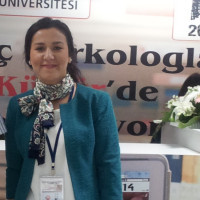
Editorial Board

İstanbul Üniversitesi Edebiyat Fakültesi Türk Dili ve Edebiyatı Bölümünü (1980) bitirdi. 1981 yılında İstanbul Üniversitesi Edebiyat Fakültesi Türk Dili ve Edebiyatı Bölümü Umumi (Eski) Türk Dili Kürsüsünde doktoraya başladı, Prof. Dr. Muharrem ERGİN’in yöneticiliğinde Çinggis Kağan Tarihi Çevirisi. Giriş, Metin, Çeviri, Notlar, Sözlük ve Dizin adlı tez ile doktor olmuştur (1990). 1983-1990 yıllarında Marmara Üniversitesi Atatürk Eğitim Fakültesi Türk Dili ve Edebiyatı Eğitimi Bölümünde önce araştırma görevlisi, sonra öğretim görevlisi olarak görev yaptı. 1984 yılında DAAD bursuyla Almanya’da dil kursuna katıldı. 1987-1989 arasında Millî Eğitim Bakanlığı tarafından Macaristan’da Loránd Eötvös Üniversitesi Türk Dili Kürsüsünde Türkçe okutmanı olarak görevlendirildi. Aynı sürede Szeged József Attila Üniversitesi Altayistik Kürsüsünde çalışmış ve derslere devam etti. 1989’de Marmara Üniversitesindeki görevine dönmüş, 1994-1999 arasında yardımcı doçent unvanıyla öğretim üyesi olarak çalıştı. 1998’de doçent oldu. 1998’de Marmara Üniversitesi Türkçe Eğitimi Bölümü öğretim üyeliğine getirildi. 2000-2002 yıllarında Kırgızistan-Türkiye Manas Üniversitesi Fen-Edebiyat Fakültesi Türkoloji Bölümünde misafir öğretim üyesi olarak görev yaptı. Aynı sürede Sosyal Bilimler Bölümü başkanlığını yürüttü. Yurda döndüğünde bölümüne bölüm başkanı olarak tayin edilmiş, doçent temsilcisi olarak fakülte yönetim kurulunda vazife aldı. 2010 altı ay Pekin Milletler Üniversitesi Uygur dili ve edebiyatı fakültesinde Karahanlıca, Hazerzmce ve İslam kültürü ve dilinin Uygur diline tesiri konularında yüksek lisans ve doktora dersleri verdi. Karahanlı, Harezm ve Çağatay Türkçesi, Kıpçak sözlükçülüğü ve dil içi çeviri konularıyla ilgilenmektedir. 2012–2018 Türk Dil Kurumu Başkanlığı yaptı. 2017’de Türkiye Bilimler Akademisi’ne asli üye seçildi. Hâlen Marmara Üniversitesndeki Atatürk Eğitim Fakültesi Türkçe ve Sosyal Bilimler Eğitimi Bölümü Türkçe Eğitimi Ana Bilim Dalı öğretim üyeliğinden yaş haddinden emeklidir.

Кыргызский государственный университет им. И. Арабаева, кандидат исторических наук, доцент
Scientific Board

He graduated from Selçuk University, Faculty of Arts and Sciences, Department of Turkish Language and Literature in 1992. He completed his master's degree in 1994 and his doctorate in 1998 at Selçuk University Institute of Social Sciences. In 1993, he started to work as a research assistant at Adnan Menderes University, Faculty of Arts and Sciences, Department of Turkish Language and Literature. In 1999, he was appointed as a faculty member at Balıkesir University, Faculty of Arts and Sciences, Department of Turkish Language and Literature. In 2003, he became an Associate Professor and in 2008 he became a Professor. In 2017, he was appointed to Marmara University Faculty of Humanities and Social Sciences and is still working here.
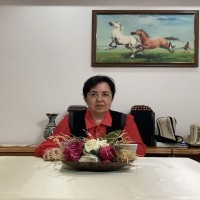
ÖZGEÇMİŞ
1. Adı Soyadı : Prof. Dr. Nergis BİRAY
İletişim Bilgileri
:Pamukkale Üniversitesi Fen-Edebiyat Fakültesi Çağdaş Türk Lehçeleri ve Edebiyatları Bölümü B Blok Giriş Katı Kınıklı Yerleşkesi DENİZLİ
:0 258 296 36 53
: nbiray@pau.edu.tr nergisb@gmail.com
2. Doğum Tarihi : 1961
3. Unvanı : Prof. Dr.
4. Öğrenim Durumu :Doktora
Lisans Türk Dili Ve Edebiyatı Atatürk Üniversitesi 1984
Yüksek Lisans Türk Dili Ve Edebiyatı ABD Gazi Üniversitesi 1988
Doktora Türk Dili Ve Edebiyatı/ Türk Dili ABD Gazi Üniversitesi 1995
Yard. Doç. Dr. Türk Dili Ve Edebiyatı Öğretmenliği Pamukkale Üniversitesi/Eğitim Fakültesi 1996
Yard. Doç. Dr. Türk Dili ve Edebiyatı Bölümü/Yeni Türk Dili ABD Pamukkale Üniversitesi/Fen-Edebiyat Fakültesi 1999
Yard. Doç. Dr. Türk Dili ve Edebiyatı Bölümü/ Çağdaş Türk Lehçeleri ve Edebiyatları ABD Pamukkale Üniversitesi/Fen-Edebiyat Fakültesi 2006
Doç. Dr. Türk Dili Ve Edebiyatı/Çağdaş Türk Lehçeleri ve Edebiyatları ABD/Kuzey-Batı Türk Lehçeleri ve Edebiyatları ABD Pamukkale Üniversitesi/Fen-Edebiyat Fakültesi 2012
Prof. Dr. Çağdaş Türk Lehçeleri ve Edebiyatları Bölümü/Kuzey-Batı Türk Lehçeleri ve Edebiyatları ABD Pamukkale Üniversitesi/Fen-Edebiyat Fakültesi 2018
5. Akademik Unvanlar
Prof.. Dr.
6.1. Yüksek Lisans Tezleri
1.Nevide BALKAN, Sevinç Çokum’un Hikâyelerinde Sentaks Çalışması, Pamukkale Üniversitesi Sosyal Bilimler Enstitüsü, Denizli, 1998.
2.Havva Kutlu ERGÜN, Muhammediye Üzerinde Yardımcı Fiil İncelemesi, Pamukkale Üniversitesi Sosyal Bilimler Enstitüsü, Denizli, 1998.
3.Özgür Semih BERKİL, Türkmen Türkçesindeki Edatlarla Türkiye Türkçesindeki Edatların Karşılaştırmalı İncelemesi, Pamukkale Üniversitesi Sosyal Bilimler Enstitüsü, Denizli, 2003.
4.Salih SEVİM, Kazak Türkçesi İle Türkiye Türkçesi Sentaksının Karşılaştırılması, Pamukkale Üniversitesi Sosyal Bilimler Enstitüsü, Denizli, 2003.
5.Hüdai CAN, Türkiye Türkçesi ve Türkmen Türkçesindeki Benzer Kelimelerde Anlam Farklılaşması, Pamukkale Üniversitesi Sosyal Bilimler Enstitüsü, Denizli, 2005.
6.Hatice UYGUN, Kazak Türkçesindeki İkilemelerin Türkiye Türkçesindeki İkilemelerle Karşılaştırılması, Pamukkale Üniversitesi Sosyal Bilimler Enstitüsü, Denizli, 2007.
7.Aynur KARAKURT, Emine Işınsu’nun Romanlarında Söz Dizimi, Pamukkale Üniversitesi Sosyal Bilimler Enstitüsü, Denizli, 2007.
8.Sema EYNEL, Erken Dönem Tatar Türkçesi ile Kur'an Tefsiri, Pamukkale Üniversitesi Sosyal Bilimler Enstitüsü Yüksek Lisans Tezi, Denizli, 2013.
9. Gülzar MAMMADOVA, Rüstem Behrudi – Şiirleri Üzerinde Dil ve Üslup İncelemesi (Azerbaycan Edebiyatı), Pamukkale Üniversitesi Sosyal Bilimler Enstitüsü ÇTLE ABD, Basılmamış Yüksek Lisans Tezi, Denizli, 2017.
10. Ezgi YIKMIŞ, Gafur Gulam’ın Seçilmiş Hikayeleri Üzerinde Dil ve Üslup İncelemesi Pamukkale Üniversitesi Sosyal Bilimler Enstitüsü ÇTLE ABD, Basılmamış Yüksek Lisans Tezi, Denizli, 2019.
11. Ulviye TOPÇU, Nazar İşankul’un Seçilmiş Hikayeleri Üzerinde Dil ve Üslup İncelemesi Pamukkale Üniversitesi Sosyal Bilimler Enstitüsü ÇTLE ABD, Basılmamış Yüksek Lisans Tezi, Denizli, 2019.
12. Süveyda ŞAHİN, Türkmen Türkçesinde Kalıp İfadeler (Türkmen Edebiyatı). Pamukkale Üniversitesi Sosyal Bilimler Enstitüsü ÇTLE ABD, Basılmamış Yüksek Lisans Tezi, Denizli, 2019.
13. Onur TARLACI, Yüz Temel Kelime - Kazak Türkçesi Eski Türkçe Türkiye Türkçesi Karşılaştırmalı, Pamukkale Üniversitesi Sosyal Bilimler Enstitüsü ÇTLE ABD, Basılmamış Yüksek Lisans Tezi, Denizli, 2019.
14. Mesut SÖNMEZ, Kazak Türkçesi Konu Çözümlemeli Söz Varlığı – Türkiye Türkçesi ile Karşılaştırmalı, Pamukkale Üniversitesi Sosyal Bilimler Enstitüsü ÇTLE ABD, Basılmamış Yüksek Lisans Tezi, Denizli, 2020.
15. Aidina TAZHIEVA, Kırgız Türkçesinde Yansıma Kelimeler, Pamukkale Üniversitesi Sosyal Bilimler Enstitüsü ÇTLE ABD, Basılmamış Yüksek Lisans Tezi, Denizli, 2020.
16. Sibel AŞKAR, Kazak Türkçesinde Evlilik İle İlgili Söz Varlığı – Karahanlı Türkçesi İle Karşılaştırmalı-, Pamukkale Üniversitesi Sosyal Bilimler Enstitüsü ÇTLE ABD, Denizli, 2021.
17. Samet ÖNDER, Galım Jaylıbay’ın Seçilmiş Şiirleri Üzerinde Dil ve Üslup İncelemesi, Pamukkale Üniversitesi Sosyal Bilimler Enstitüsü ÇTLE ABD, (Devam ediyor).
18. İslam MAMMADOV, Güney Azerbaycan Çocuk Oyunları, Pamukkale Üniversitesi Sosyal Bilimler Enstitüsü ÇTLE ABD, (Devam ediyor).
19. Abdullah ALLAHBERDİ, Abdurrahim Oraz’ın Seçilmiş Şiirleri (Dil ve Üslup İncelemesi), Pamukkale Üniversitesi Sosyal Bilimler Enstitüsü ÇTLE ABD, Denizli, 2022 (Devam Ediyor).
20.
6.2. Doktora Tezleri
1. Esra Gül KESKİN, Türkçede Birleşik Ekler, Pamukkale Üniversitesi Sosyal Bilimler Enstitüsü TDE ABD, Denizli, 2017. (Yayımlanmamış Doktora Tezi).
2. Assem KASSYMOVA, Kazak Türkçesinde Kalıp Sözler (Türkiye Türkçesi İle Karşılaştırmalı), Pamukkale Üniversitesi Sosyal Bilimler Enstitüsü TDE ABD, Basılmamış Doktora Tezi, Denizli, 2018.
3. Aygül TÜRİKPENOVA, Tarihi Türk Lehçeleri, Kazak Türkçesi ve Türkiye Türkçesindeki Bitki Adları, (Danışmanı: Prof. Dr. Bilge Özkan Nalbant), Pamukkale Üniversitesi Sosyal Bilimler Enstitüsü TDE ABD, 2. Danışmanlık.
4. Süveyda ŞAHİN, …
5. Aidina TAZHIEVA, ….
6. Doktora 2. Danışmalık (2018-19 Güz öğretim yılında başladı) Kazakistan (Astana L.N.Gumilyov Eurasian National University / 2 öğrenci; 2. Semey Kazakh Humanitarian Juridical Innovative University / 3 öğrenci / El-Farabi Kazak Milli Üniversitesi/ 1 öğrenci ).
7. Yayınlar
7.1. Uluslar arası hakemli dergilerde yayınlanan makaleler
1. Nergis BİRAY, “Hayvancılık Terimleri İle İlgili Bir Makale ve Bazı Küçükbaş Hayvancılık Terimlerimiz – I”, Millî Folklor Dergisi - 46 (Yaz / Summer-2000) s. 61 - 79.
2. Nergis BİRAY, “Hayvancılık Terimleri İle İlgili Bir Makale ve Bazı Küçükbaş Hayvancılık Terimlerimiz – II”, Millî Folklor Dergisi 47 (Güz 2000), s. 63 - 80.
3. Nergis BİRAY, “Hayvancılık Terimleri İle İlgili Bir Makale ve Bazı Küçükbaş Hayvancılık Terimlerimiz –III”, Millî Folklor Dergisi 48 (Kış 2000), s.55 - 72.
4. Nergis BİRAY, “Türkmenler Arasında Ali Şir Nevâî Hakkında Anlatılan Halk Destanları–1”, Millî Folklor Dergisi 39 (Güz 1998), s.57–77.
5. Nergis BİRAY, Türkmenler Arasında Ali Şir Nevâî Hakkında Anlatılan Halk Destanları–2, Millî Folklor Dergisi 40 (Kış 1998), s.50–58.
6. Nergis BİRAY, “Türkiye’ye Yerleşen Afganistan Kazaklarından Derlenmiş Tekerleme, Bilmece ve Ata Sözleri”, Millî Folklor 53 (Bahar / 2002), s.71–78.
7. Nergis BİRAY, “Aytıs, Aytıs-Tartıs”, Millî Folklor 57 (Bahar / 2003), s.58 – 76.
8. Nergis BİRAY, “Türkiye Türkçesi ile Kırgız Türkçesindeki Cümlelerin Çeşitleri Bakımından Karşılaştırılması Üzerine Bir Deneme”, Kırgızistan-Türkiye Manas Üniversitesi Sosyal Bilimler Dergisi, Bişkek, 2004, Sayı: 10, s. 63–81.
9. Nergis BİRAY, Levent DOYURAN ile, “Türkiye Türkçesi ile Kırgız Türkçesinde Zarf ve Zarf Tümleci”, Kırgızistan-Türkiye Manas Üniversitesi Sosyal Bilimler Dergisi, Bişkek. 2005, sayı:14, s.53–65.
10. Nergis BİRAY, “Ahmet BAYTURSINULI’na Göre Kazak Türkleri Yazılı Edebiyatının Dönemleri ve Türleri”, Millî Folklor 68 (Kış / 2005), s.67–77.
11. Nergis BİRAY, “Türkiye Türkçesi ile Kırgız Türkçesindeki Cümlelerin Unsurları Bakımından Karşılaştırılması”, Dil Araştırmaları, Bahar 2007, yıl:1, S.1, s. 157–173.
12. Nergis BİRAY, “Kazak Türkçesinde Sınırlandırma İşlevli Dil Birlikleri Üzerine: gana, qana, tek, -aq”; Modern Türklük Araştırmaları Dergisi, Aralık–2008, Cilt: 5, sayı:8, ss.48-83.
13. Nergis BİRAY, “12 Hayvanlı Türk Takvimi —Zamana Ve İnsana Hükmetmek”, Atatürk Üniversitesi Türkiyat Araştırmaları Enstitüsü Dergisi- Uluslar arası Hakemli Dergi-, TAED-39, Prof. Dr. Hüseyin AYAN Özel Sayısı, (Editör: Prof. Dr. Pervin ÇAPAN) Erzurum, 2009, s. 671-683.
14. Nergis BİRAY, “Denizli Ağzından Derleme Sözlüğüne Katkılar”, Turkish Studies – Prof.Dr. Ahmet BURAN Armağanı, Volume 4/8, Fall 2009; s.752-781.
15. Nergis BİRAY, “Kazak Türkçesinde Modal Söz (Kelimenin Dokuzuncu Türü mü?)”, Turkish Studies – Prof.Dr. Hamza Zülfikar Armağanı, Volume 4/3, Spring 2009 s. 338-361.
16. Nergis BİRAY, “Terim Dünyamızda Yılan: Kavram, Anlam ve Yapı Bakımından”, Eurassience Journals - Avrasya Terim Dergisi, 2013, 1 (2): 95-113.
17. Nergis BİRAY, “Kazak Türkçesinde “Ne” Kelimesi ve İşlevleri”, Prof. Dr. Mustafa Argunşah Armağanı, Turkish Studies, Voluma 8/7 Summer 2013, s. 207 - 216 Ankara.
18. Nergis BİRAY, "Söz Varlığımızda Yılan", Eurasscience Journals - Avrasya Terim Dergisi, 2014, 2 (1): 25 – 49.
19. Nergis BİRAY, “Ahmet Baytursınulı Hayatı, Kültürel, Edebi Faaliyetleri ve Eserleri”, Kazakstan Respublikası Bilim Jäne Ğılım Ministrligi Semey Kalasınıñ Şäkärim Atındağı Universiteti Şäkärim Ğılımiy-Zerttev Ortalığı; Şäkärim Ğılımiy-tanımdık jurnal, 2014, ISSN 2308-0590 Индекс 74661, s. 62-69.
20. Nergis BİRAY, “Kazak Türkçesinde –mIs”, Dil Araştırmaları, Güz - 2014, Sayı.14, s. 35–54.
21. Nergis BİRAY, "Türkiye-Kazakistan İlişkileri ve Ortak Türkçe Üzerine", Eurasian Education - Evraziya Bilimi - Evraziyskoe Obrazovaniye - İnternational Scientific, Methodical, Pedagogical Journal, N01 (1) 2015, s. 24–26.
22. Nergis BİRAY, Türkiye İle Türkmenistan Arasındaki Kültür Dil ve Edebiyat Alanındaki İşbirliği Gelişiyor", Atavatan Türkmenistan Halkara Jurnal (Uluslararası Dergi),Şubat / Fewral 2015, Sayı /Sanı:6, s. 66- 69.
23. Nergis BİRAY, "Türkmen Türkçesinde Ovnuk Bölekler", Uluslararası Türkçe Edebiyat Kültür Eğitim Dergisi (TEKE), Sayı: 4/3 2015 s. 955–994.
24. Nergis BİRAY, "Kazak Bozkırında Başkaldırı ve İsyanın Sesi: Ahmet Baytursınulı", Gazi Türkiyat, Bahar 2015/16, s.1–14.
25. Assem KASSYMOVA ile, "Kazak Türkçesi-Türkiye Türkçesi Gramer Terimleri", Eurasian Education - Evraziya Bilimi, İnternational Scientific, Methodical, Pedagogical Journal, No. 3 (3) 2015, s. 29 – 40.
26. Esra Gül KESKİN ile, “Türkiye'de Kazak Türkleri, Kazak Türkçesi, Tarih ve Kültürü Üzerine Yayımlanmış Kitaplar, Hazırlanmış Tezler”, Eurasian Education, No 5 (5) 2015, s.17-27.
27. Sema EYNEL ile, “Türkiye’de Kazak Türkçesi Üzerine Yayımlanmış Dil ve Edebiyat konulu Makale ve Bildiriler”, Eurasian Education (Evraziya Bilimi / Evraziyskoe Obrazovaniye), 2015 - (7), 12-25.
28. Esra Gül KESKİN ile. (2015). Birleşik Eklerle İlgili Bir Teori Denemesi. Türk Kültürü - Türk Kültürü Araştırmaları Dergisi, 8(2), 109-133.
29. Nergis BİRAY, “Akıt Ülimciulı’nın Şiirlerinde Öbür Dünya ve Ölüm”, Evraziya Bilimi – Eurasian Education, 3-4 (17) 2017, s. 34-38.
30. Nergis BİRAY, “Türk Dünyasının Ortak Değeri Olarak "Akıl" Konulu Atasözleri”. Türk Kültürü ve Hacı Bektaş Veli Araştırma Dergisi 2017- (81), 133-150.
31. Nergis BİRAY, “Kazak Edibi Ahmet Baytursınulı’nın Şiirlerindeki Deyimler Üzerine Bir İnceleme”, Modern Türklük Araştırmaları Dergisi, 2017, 14 (3), 44-82, Doi: 10.1501/MTAD.14.2017.3.26 (Yayın no: 4367941).
32. Esra Gül Keskin ile, “Tarihi ve Çağdaş Türk lehçelerinde Yapı ve Anlam Bakımından Sal- Fiili”, ISLET-2017, s. 9. 3. International Symposium on Language Education and Teaching (20-23 April 2017 – Rome), Abstract Boks, 2017. TKAE Türk Kültürü Dergisinde yayımlandı (2018)
33. Baktıgül ABDIHANOVA ile, “İntertekstualdılıq Teoriyası men Pretsedentti Qubılıs Arasındağı Baylanıs”, L.N. Gumilyev atındağı Evraziya Ulttıq Universitetiniñ Habarşısı, 2018, 1(122), 8-14.
34. Esra Gül KESKİN ile, “Tarihî ve Çağdaş Türk Lehçelerinde Yapı ve Anlam Bakımından sal- Fiili”, Türk Kültürü, 2018, 11(1), 47-88.
35. Sema EYNEL ile, “Ahmed Cevad Ahundzade (1892-1939), Kardeş Kalemler, 2018, 12/142, s. 6-14.
36. Sema EYNEL ile, “Bahtiyar Vahapzade (1925-2009)”, Kardeş Kalemler, 2019, Yıl: 13, Sayı: 145, s. 7-11.
37. Sema EYNEL ile, “Vefatının 20. Yılında Ata Atacanov”, Kardeş Kalemler, 2019, Yıl: 13, Sayı: 147, s. 26-31.
38. Sema EYNEL ile, “Abdullah Tukay (1886-1913)”, Kardeş Kalemler, 2019, Yıl: 13, Say: 148, s. 13-29.
39. Ulviye TOPÇU ÖZTÜRK ile, “Nazar İşankul’un “İstila” Hikayesi Üzerine Bir İnceleme”, Türkologiya, No 1 (93), Ocak-Şubat 2019, s. 91-112. (ISSN 1727/060X).
40. Süveyda ŞAHİN ile, “Türkmen Türkçesinde Kalıp İfadeler”, Turkologiya, No.2 (94). Mart-Nisan, 2019, s. 34-46. (ISSN 1727/060X//ÄOJ 81’271; 82.085; 808.5 – ĞTAMP16.21.61).
41. Sema EYNEL ile, “Hüseyin Şehriyar (1906?-1988)”, Kardeş Kalemler, 2019, Yıl: 13, Sayı: 152, s. 22-31.
42. Nergis BİRAY, “Mağcan Cumabayulı ve Ziya Gökalp’in Şiirlerinde Vatan Anlayışı ve Vatan Kavramı”, Eurasian Educatıon (Evraziya Bilimi-Evraziyskoe Obrazovanie), No:5 (30), 2019, s. 4-9.
43. İlmira RAGİBOVA ile, “Kaygusuz Abdal’ın Şiirlerindeki Kalıp Sözler Üzerine”, Eurasian Education (Evraziya Bilimi / Evraziyskoe Obrazovaniye), No. 14770. 2020: 6(37)/7-11.
44. Nergis BİRAY, “Türkiyağa Köşip Kelgen Türik Tekti Avğanstan Köşpendisi- Qazaq Türikteri”, Eurasian Education (Evraziya Bilimi / Evraziyskoe Obrazovaniye), No. 14770. 2021: 1(38)/4-6.
45. Nergis BİRAY, “Türk Dünyasının Usta Şairi Ali Şir Nevai’nin Cemili’nin Şiirlerine Etkisi”, Özbekistan’a gönderildi.
7.2. Uluslar arası bilimsel toplantılarda sunulan ve bildiri kitabında (Proceeding) basılan bildiriler.
1. Nergis BİRAY, “Yusup-Züleyha’da Nurmuhammet Andalıp’ın Karışık Dil Özellikleri”, I. Uluslararası Türk Dünyası Kültür Kurultayı (09–15. 04. 2006) Çeşme / İZMİR. (Ege Üniversitesi Türk Dünyası Araştırmaları Enstitüsü) Yayın: I. Uluslararası Türk Dünyası Kültür Kurultayı – Bildiriler-I-, Ankara, 2007, s. 411–434.
2. Nergis BİRAY, “Kazak Şivesi ile Denizli Ağzında Kök Haldeki Benzer İdrak Fiillerinde Anlam Farklılaşmaları”, Uluslararası Denizli ve Çevresi Tarih ve Kültür Sempozyumu (6–7–8- Eylül 2006); Bildiriler II; Denizli, 2007, s. 307–314. (ISBN 978–975–6992–20–3 (2. c) // ISBN 978–975–6992–18–0 (TK)).
3. Nergis BİRAY, “Mehmet Akif Ersoy ile Ahmet Baytursınulı’nın Fikir Dünyası”, Türk Dünyasını Aydınlatanlar: Mehmet Akif Ersoy ve Ahmet Baytursınulı Sempozyumu (10-15 Ekim 2011, Mehmet Akif Ersoy Fikir ve Sanat Vakfı ile Kazakistan Yabancı Diller ve Mesleki Kariyer Üniversitesi ortaklığıyla, Almatı. (Kazakistan'da Türkiye Türkçesi ve Kazak Türkçesi ile yayımlandı, 2011.
4. Nergis BİRAY, “Kazak Türkçesinde Ünlemler”. Uluslararası VI. Türk Dili Kurultayı (20-25 Ekim 2008), Ankara- Bilkent Üniversitesi Yerleşkesi, Uluslararası VI. Türk Dili Kurultayı Bildirileri, I. Cilt, TDK Yay., Ankara, 2013. S. 789-809. (Tam Metin Bildiri) ISBN- 278-978-595-525-2.
5. Nergis BİRAY, “Ahmet Baytursınulı Şığarmalarındağı Turaktı Tirkesterdiñ Leksiko Semantikalık Sıypatı”. Kazakistan Respublikası Bilim Cane Ğılım Ministrligi Semey Kalasının Şakerim Atındağı Memlekettik Universiteti Psiholingvistikalık Oratlık – “Psiholingvistikanıñ Özekti Maseleleri” Halıkaralık ğılımıy-teciriybelik konferantsiyası, 2014, s. 8–13. (Tam Metin Bildiri/)
6. Nergis BİRAY, “Magtımgulınıñ Setirlerinde Köngül Adalgısı”, Türkmenistanın Ilımlar Akademiyası Milli Golyazmalar İnstitutı, “Magtımgulı Pıragı ve Umumadamzat Medeni Gımmatlıkları” Atlı Halkara Ilmı Maslahat”, (14-16.05.2014) Aşgabat, Türkmenistan (Tam metin bildiri).
7. Nergis BİRAY, “Kazak Türkçesinde Terim Yapma Yolları - Ahmet Baytursınulı Örneği ile”. VII. Uluslararası Dünya Dili Türkçe Sempozyumu – Fırat Üniversitesi – Elazığ (16-18.10.2014), 2014 – 1. Cilt, s. 473-499. (Tam Metin Bildiri/).
8. Nergis BİRAY, “Kazak Türkçesinde Yansımalı İkilemeler – Ses Özellikleri Bakımından”. VI. Dünya Dili Türkçe Sempozyumu, 2. Cilt, s. 1091-1105. (Tam Metin Bildiri/)(Yayın No:1353036) ISBN- 978-605-9968-20-1 (2.c)
9. Nergis BİRAY, “Kutadgu Bilig de ve Mahtumkulu’nun Şiirlerinde Adalet Kavramı”. Uluslararası Türkmen Şairi Mahtumkulu Firaki Sempozyumu 19.03.2015 – Başkent Üniversitesi, 2015, s. 31–49. (Tam Metin Bildiri/) (Yayın No:1537874)
10. Nergis BİRAY, “Alaş’ın Aydınlatıcı Önderi: Ahmet Baytursınulı”, Türk Dünyasında Aydınlanma Hareketleri – 100. Yılında Alaş Uluslar arası Konferans (Sözlü Sunum), 2017.
11. Asem QASIMOVA ile, "Salıstırmalı Qazaq jäne Türik Tilderindegi Qalıp Sözder". Qazirgi Filologiyalıq Zerttewlerdegi Özekti Mäseleler - Materialdar -II, 2017- 2(УДК 80/81(063), 30-34.
12. Ezgi ERDEM ile, “Orta Asya’da Yürütülen Rus Dil Politikası Fikrinin Amaçları ve Türk Cumhuriyetlerinin Mücadele Siyaseti”, 100. Yılında SSCB İhtilali ve Türk Dünyası (Özet Bildiri/Davetli Konuşmacı), 2017.
13. Ezgi ERDEM ile, “Türk Dünyası Üzerinde Uygulanan Ruslaştırma Siyasetinin Afişlere Yansıması”, Atabetü’l-Hakayık’ın Basılışının 100. Yıldönümü Adına X. Uluslararası Dünya Dili Türkçe Sempozyumu (17-19 Ekim 2018 Eskişehir), X. Uluslararası Dünya Dili Türkçe Sempozyumu Bildiri Kitabı (Ed. F. Ağca, A. Koç), Eskişehir Osman Gazi Üniversitesi, Eskişehir, 2019, s. 311-324, (ISBN: 978-605-9975-39-1).
14. Nergis BİRAY, “Abay Kunanbay’ın Eserlerindeki İfadelerinden Hareketle Sanatla ilgili Görüşleri”, Doğumunun 175. Yılı Anısına Uluslararası Abay Kunanbayoğlu Sempozyumu Bildiriler Kitabı (25-27.12.2020), İzmir: 2020: 91-105.
15. Şolpan S. AQTANOVA, Nergis BİRAY; “Qazaqtıŋ körnekti jazuwşısı pen Amerikanıŋ ataqtı jazuwşısı E. Hemingway’diŋ şığarmalarındağı jalğızdıq konseptisiniŋ berilüwi”, “Qunanbay: aŋız jäne aqıyqat”xalıqaralıq ğılımiy-praktikalıq konferantsiya - 20 Nawrız 2020”, Qazaqstan Respublikası Bilim jäne ğılım ministrligi Şığıs Qazaqstan oblıstık äkimdigi Şäkärim universiteti Şığıs Qazaqstan oblısınıŋ mädeniyet, arhivter jäne qujattama basqarması, Jıynaq: Semey, 2020, s. 50 -54.
16. Nergis BİRAY, “Kazak Türkçesinde Ekeş”, Uluslararası Bilge Tonyukuk Sempozyumu 25-26.12. 2021, Uluslararası Bilge Tonyukuk Sempozyumu Bildiri Kitabı, PAÜ ALTAY DİLMER Yay. (Ed. N. Biray, M.V. Nalbant, S. Eynel), Denizli, 2020: 80-92. ISBN 978-625-00-0173-8 (e-kitap).
17. Nergis BİRAY, “Yunus Emre’nin Türkçeciliği”, Uluslararası Yunus Emre ve Dünya Dili Türkçe Sempozyumu (YU-DİL/7-9 Mayıs 2021), Eskişehir, …
18. Nergis BİRAY, Süveyda ŞAHİN, “Yunus Emre’nin Mısralarında Gezinti – Bireysel, Toplumsal ve Evrensel Değerler Açısından-“, Yunus Emre ve Türkçemiz Bilgi Şöleni (17-21 Mayıs 2021), Trakya, ….
19. Nergis BİRAY, “Türk Dünyasında Yunus Emre Çalışmaları”, İstanbul, …
Özeti basılmış bildiriler:
20. Esra Gül KESKİN ile, “Birleşik Eklerle İlgili Bir Teori Denemesi (Kırgız Türkçesi – Birleşik Ekler – Gramatikalleşme), VIII. Dünya Dili Türkçe Sempozyumu (15-17 Ekim 2015 Çanakkale), Bildiri Kitabı, I. Baskı, Ankara, 2015, s. 30. TKAE Yay. Türk Kültürü Dergisinde yayınlandı (2017)
21. Uzm. Sema EYNEL ile. “Kazak Çocuk Oyunlarında Ceza ve Ceza Sistemi”. I. Uluslararası Çağdaş Türk Lehçeleri ve Edebiyatları Bilgi Şöleni, (13-14.04.2017) – 1, s. 30, (Yayın No:3542240). (Yayın aşamasında)
22. Esra Gül Keskin ile, “Tarihi ve Çağdaş Türk lehçelerinde Yapı ve Anlam Bakımından Sal- Fiili”, ISLET-2017, s. 9. 3. International Symposium on Language Education and Teaching (20-23 April 2017 – Rome), Abstract Boks, 2017. TKAE Türk Kültürü Dergisinde yayımlandı (2018)
23. Nergis BİRAY, “Kazak Türkçesinde “üy” Kelimesi ve Terimleşme”. Altay Toplulukları Sempozyumu 23-26.07.2017 İstanbul Aydın Üniversitesi; Özetler – Abstracts (Yayın No:3557544), İstanbul, 2017, s. 65. (Yayın aşamasında)
24. Sema EYNEL ile, “Kazak Çocuk Oyunlarının Rolü ve İşlevi (Sosyal Bir Birey Olma: Dil, Kültür, Gelenekler), 7. Uluslar arası Altay Toplulukları Sempozyumu (Gelenekler, Görenekler, Töreler ve Yasalar), (6-10 Ağustos 2018), Ulanbator – Moğolistan, (Özet bildiri – Davetli Konuşmacı).
25. Nergis BİRAY, “Kazak Türkçesindeki Birleşik Yapılı Hayvan Adları – Yapı ve Anlam Bakımından”, 8. Uluslar arası Altay Toplulukları Sempozyumu (Hayvancılık ve Tarım), (19-23 Ağustos 2019), Bişkek, Issık-Köl/Çolpan Ata – Kırgızistan, (Özet bildiri – Davetli Konuşmacı/Yayında).
26. Nergis BİRAY, “Yunus Emre’nin Türkçeciliği”, Uluslararası Yunus Emre ve Dünya Dili Türkçe Bilgi Şöleni (7-9.05.2021), Eskişehir. (Yayımlanacak)
27. Nergis BİRAY, “Aqın Ahmet Baytursınulı jäne Onıŋ Öleŋderi Tuwralı”, Xalıqaralıq ğılımiy-tejiriybelik onlayn-konferantsiya Ğasır Radiosı jäne Ahmet Baytursınulı Fenomeni Qazaqstan Respublikası Bilim jäne Ğılım Ministrligi L.N.Gumilyev Atındağı Evraziya Ulttıq Universiteti, 13 Mamır 2021 09.50- 16.00. (Yayımlanacak).
28. Nergis BİRAY, Arş. Gör. Süveyda ŞAHİN, “Yunus Emre’nin Mısralarında Gezinti – Bireysel, Toplumsal, Evrensel Değerler Açısından-”, Yunus Emre ve Türkçemiz Bilgi Şöleni (17-21.05.2021) Trakya Üniversitesi, Edirne.
29. Nergis BİRAY, Arş. Gör. Süveyda ŞAHİN, “Yunus Emre ve Babarahim Meşreb’in Şiirlerinde Gönül Kavramı”, Uluslararası Türk Dünyası Yunus Emre Sempozyumu (24-27.05.2021) PAÜ ALTAY DİLMER ve PAÜ FEF ÇTLE Bölümü İşbirliği ile, Denizli.
30. Nergis BİRAY, “Aydınlanma Hareketi Alaş Fikirlerinin Ahmet Baytursınulı’nın Eserlerindeki Yansıması”, 31 Mayıs Siyasi Baskı, Sürgün ve Açlık Kurbanlarını Anma Günü – Çevrimiçi Sempozyum, Kazakistan Büyükelçiliği, 01.06.2021.
7.3. Yazılan Uluslar arası kitaplar veya kitaplarda bölümler.
A. Kitaplar
1. Himmet BİRAY ile, (A.Gurbannepesov - A. Atabayev); Çağdaş Türkmen Şiirlerinden Örnekler, T.C. Kültür Bakanlığı Yayınları, Ankara 1995. (975-17-1218-1) 551s.
2. Soltanşa ATANIYAZOV, (Aktarma: Doç. Dr. Seyitnazar ARNAZAROV ile; Şecere – Türkmenin Soyağacı, Ötüken Yay., İstanbul, 2010. (978-975-437-765-1) 288s.
3. Türkiye’deki Afgan Kazakları Ağzı, Türk Dil Kurumu Yayınları, Ankara, 2009. (ISBN 978-975-16-2125-2) (Doktora Tezinden kitaplaştırılmıştır.) 500s.
4. Nergis BİRAY, Ahmet Baytursınulı, Şiirleri Üzerinde Dil ve Üslup İncelemesi, Bilge-Oğuz Yayınları, İstanbul, 2011. 450 s.
5. A. Güzel, A. Duymaz, B. Sarıyev, N. Biray, H. Duran, H.İ. Kutlu, E. Yılmaz; Mahtumkulu Divanı I-II (Türkiye Türkçesi), Türksoy, Ankara, 2014.
6. A. Güzel, A. Duymaz, B. Sarıyev, N. Biray, H. Duran, E. Üşenmez, H.İ. Kutlu, E. Yılmaz; Mahtumkulu Divanı (Türkiye Türkçesi), Eskişehir Valiliği, Akademik Kitaplar, Eskişehir, 2014.
7. A. Güzel, A. Duymaz, B. Sarıyev, N. Biray, H. Duran, H.İ. Kutlu, E. Yılmaz; Mahtumkulu Divanı (Türkmen Türkçesi – Türkiye Türkçesi), (Türkmenistan Cumhurbaşkanlığı için özel baskı), T.C. Başbakanlık TİKA, Ankara, 2014.
8. A. Güzel, A. Duymaz, B. Sarıyev, N. Biray, H. Duran, H.İ. Kutlu, E. Yılmaz; Mahtumkulu Anı Kitabı (Dr. Himmet Biray’ın aziz ruhuna), T.C. Başbakanlık TİKA Yay., Ankara, 2014.
9. Nergis BİRAY, Ekrem AYAN, Güljanat KURMANGALİYEVA ERCİLASUN; Çağdaş Kazak Türkçesi (Ses ve Şekil Bilgisi, Cümle Bilgisi, Metinler), Bilge Kültür-Sanat Yayın Dağıtım, İstanbul, 2015. (Ed. H. Gayretullah, Sayfa sayısı: 269).
10. Nergis BİRAY, Ekrem AYAN, Cemile KINACI (2018), Ğalım Jaylıbay, Yankı; Bengü Yay., 1. Baskı, Ankara.
11. Şolpan SERİKBOSINKIZI SATİYEVA, Nergis BİRAY (2019). Eksperimenttik Psihologiya Boyınşa Praktikum Jäne Psihodiagnostika (Teoriyalık jäne praktikalık kurs), 213 s., JŞS “Lantar Treyd”, Almatı.
12. Türk Dünyasının Bilgesi Abay Kunanbayoğlu, 175. Yıl anısına (Ed. Nergis BİRAY, Güljanat KURMANGALİYEVA, Soner SAĞLAM), Bengü Yayınları, Ankara, 2020.
13. A. Güzel, A. Duymaz, B. Sarıyev, N. Biray, H. Duran, E. Yılmaz; Mahtumkulu Divanından Seçmeler (Hikmetler, Gönülden Nakışlar,Nasihatler -Türkmen Türkçesi – Türkiye Türkçesi), Eskişehir Valiliği, Akademik Kitaplar, Eskişehir, 2021.
14.
B. Kitaplarda Bölüm
1. Nergis BİRAY, “Bet Açma Geleneği ve “Betaşar” Türü”, Prof. Dr. Sadık TURAL Armağanı – (Yay. Haz. Dr. İdris KARAKUŞ), Ankara,2002, s.226–238.
2. Nergis BİRAY, “Türkiye Türkçesi ile Kazak Türkçesindeki Kelime Grupları ve Sınıflandırılması Üzerine”, Prof. Dr. Abdurrahman GÜZEL Armağanı, Gazi Eğitim ve Kültür Vakfı Yay., Ankara, 2004, s.197-214.
3. Nergis BİRAY, “Kazak Türkçesinde De- Fiilinin Kullanılışı Üzerine”, Prof. Dr. Ahmet Bican ERCİLASUN Armağanı, Prof. Dr. Ahmet Bican ERCİLASUN Armağanı, Akçağ Yay., Ankara, 2008, s. 394-424.
4. Nergis BİRAY, “Kırgız Türkçesindeki Deyimler ve Deyimlerin Sınıflandırılması Üzerine”, Prof. Dr. Fikret TÜRKMEN Armağanı, İzmir, 2005, s.121–135.
5. Nergis BİRAY, Türkiye Dışındaki Türk Edebiyatları Antolojisi- Türkmenistan Türk Edebiyatı 10. cilt, T.C. Kültür Bakanlığı Yayınları /2126, Türk Dünyası Edebiyatı Dizisi /32, Kültür Bakanlığı, 1998.
6. Nergis BİRAY, Türkiye Dışındaki Türk Edebiyatları Antolojisi- Türkmenistan Türk Edebiyatı 11. cilt, T.C. Kültür Bakanlığı Yayınları /2126, Türk Dünyası Edebiyatı Dizisi /32, Kültür Bakanlığı, 1998.
7. Nergis BİRAY, Türkiye Dışındaki Türk Edebiyatları Antolojisi - Kazakistan Türk Edebiyatı-I, 27. cilt, T.C. Kültür Bakanlığı Yayınları, Ankara, 2005. (ISBN 975–17–1263–7(Takım)
8. Nergis BİRAY, Türkiye Dışındaki Türk Edebiyatları Antolojisi - Kazakistan Türk Edebiyatı-II, 28. cilt, T.C. Kültür Bakanlığı Yayınları, Ankara, 2005.
9. Prof.Dr. Şakir İBRAYEV, Dr. Muhtarhan ORAZBAY, Gülcazira KANAŞAYEVA, Şarapat MAYLIBAYEVA ile birlikte, Basınnan Künimizge Şeyin Türkiya Türik Ädebiyatı – Tariyh, Esimder, Tekstteri, Ankara, 2002, Türk Ocakları Eğitim ve Kültür Vakfı Yayınları. (ISBN–975–7739–05–7).
10. Nergis BİRAY, “Mahtumkulu’nun Şiirlerinde Ölüm Teması”, Bengü Beläk Ahmet Bican ERCİLASUN Armağanı, TKAE Yay., Ankara, 2013, s. 153-182.
11. Rayhan İymahambetova ile; “Ahmet Baytursınulı’nın Yirmi Üç Coqtavı (Ağıdı)”; Prof. Dr. Önder Göçgün’e Armağan (Ed. Doç. Dr. Mithat Aydın), Pamukkale Üniversitesi Yayınları No:27, I. baskı, Denizli, 2013; s. 235 – 251.
12. Nergis BİRAY, “Kazak Türkçesinde Enklitikler”, Prof. Dr. Leyla KARAHAN Armağanı, Akçağ Yay., Ankara, 2013; s.259-281.
13. Nergis BİRAY, “Kazak Türklerinde Ölümle İlgili Kelime, Kelime Grubu ve Deyimlerden Hareketle Ölüm Kavramı”, Prof. Dr. Abdurrahman Güzel Armağanı, (Ed. Doç. Dr. C. Demir, Yrd. Doç. Dr. H. Parlakyıldız), Akçağ Yayınları, Ankara, 2013, s.353-371.
14. Nergis BİRAY, “Defin Sonrası Uygulanan Gelenekler”, Aile Yazıları-8; T.C. Aile ve Sosyal Politikalar Bakanlığı, Editör: Saim Sakaoğlu, Mehmet Aça, Pervin Ergun, Basım sayısı:1, Sayfa Sayısı 378.
15. Nergis BİRAY, “Süyinbay Aronulı’nın Şiirlerinde Birlik ve Bağımsızlık Kavramları”, Doğumunun 200 yılında Süyinbay Aronulı, Bengü Yayınları, 2015, Editör: Malik Otarbayev, Basım sayısı:1, Sayfa Sayısı 131, s. 111-117.
16. Nergis BİRAY, “Mahtumkulu’nun Şiirlerinde Gönül Kavramı”, Kaygusuz’un Bilge Torunu Abdurrahman Güzel’e Armağan, TKAE Yay., (Ed. Doç. Dr. Bülent GÜL, Doç. Dr. Hamiye DURAN), 2016, s. 61-83.
17. Nergis BİRAY, “Kazak Türkçesi”, Çağdaş Türk Lehçeleri Metin Aktarmaları; Kesit Yayınları, İstanbul, 2016, s.195-256.
18. Soner SAĞLAM ile, “Uygur Türkçesi”, Çağdaş Türk Lehçeleri Metin Aktarmaları; Kesit Yayınları, İstanbul, 2016, s.149-195.
19. Nergis BİRAY, “Kazak Türkçesinde “–ğasın, -gesin; -qasın, -kesin “Eki”, Prof. Dr. İsmail Çetişli Hatıra Kitabı (Ed. Yard. Doç. Dr. M. S. Çelepi), Akçağ Yay., Ankara, 2016, s. 148-160.
20. Nergis BİRAY, “Bärimizdiñ Anası” mı? “Bärimizdiñ Anamız” mı?” (Kazak-Kırgız-Özbek Türkçelerinde)”, Türklük Biliminin Ulu Çınarı Prof. Dr. Zeynep KORKMAZ Armağanı, Ed. Prof. Dr. Leyla Karahan, TKAE Yay., 2017, s.95-108.
21. Nergis BİRAY, “XX. Yüzyıl Kazak Edebiyatı”, Türk Dünyası Çağdaş Edebiyatları El Kitabı, (Ed. O. Söylemez, S. Azap), Kesit Yay., İstanbul, 2018, s. 103-207.
22. Soner SAĞLAM ile; “XX: Yüzyıl Türkmen Edebiyatı”, Türk Dünyası Çağdaş Edebiyatları El Kitabı, (Ed. O. Söylemez, S. Azap), Kesit Yay., İstanbul, 2018, s. 425-569).
23. Seitova Shynar BOTAYKIZI, Serikkul KUSHERBAYEVNA SATENOVA ile, “Ahmet Baytursınulı: Millî Üstat”, Türk Düşüncesi Yolunda Mehmet Akgün’e Armağan, AD Yay., 2018, (Ed. F. Karahan, F. Gül, M. Köktürk), Basım sayısı:1, Türkçe (Araştırma (Tez Hariç) Kitabı), (Yayın No: 4367957).
24. Nergis BİRAY, “Kazak’ın İrge Taşı, Alaş’ın Sesi – Ahmet Baytursınulı”, Bilim ve İnsan – Şahsiyetini İnşa Edenler, (Editör: Z.B.Özer, F. Yapici, S.Aktay), Gazi Kitabevi, Ankara, 2018.
25. Nergis BİRAY (2019). “Kazak Türkçesinde “Üy” Kelimesi – Kavram Alanı – Kelime Ailesi – Terimleşme”, Altay Toplulukları – Mesken ve Mesken Kültürü, (Ed. İ. Şahin, F. Solak, G.K. Ercilasun, M.B. Çelik, A. Taşbaş, E. Taşbaş), TDBB Yay., İstanbul, s. 75-93. (ISBN 978-605-2334-06-5).
26. Nergis BİRAY (2019). “Kazakistanlı Kazak Türkologlar – Ahmet Baytursınulı”, Türkiye Dışındaki Türk Dünyası Türkologları-Dilciler, Ed. A. Buran; Akçağ Yay., Cilt. 2, s. 257- 287.
27. Nergis BİRAY (2019). “’Cedit’çilikten “Cumhuriyet”e Türk Kadını (İsmail GaspıralıZiya Gökalp- Mustafa Kemal Atatürk Çizgisinde”, Umay Ana’dan Umay Hoca’ya Prof. Dr. Umay Günay Türkeş’e Armağan, Ed. İ. Çetin, B. Gül; Türk Kültürünü Araştırma Enstitüsü Yay., s. 361-368, Ankara.
28. Uzm. Baktıgül ABDIHANOVA ile (2020). “Yusuf Has Hacib’in “Kutadgu Bilig”i ile Abay Kunanbayev’in “Kara Sözler”inde Akıl”, (Ed. N.Biray, G.K.Ercilasun, S.Sağlam), Türk Dünyasının Bilgesi Abay Kunanbayoğlu, Bengü Yayınları, Ankara, s. 247- 257.
29. Tursın JURTBAY, “Bolatözek-Qayım Muhamedhanov (Çev. C. Arslan, N. Biray, “Bolatözek-Kayım Muhamedhanov” (2020). Türk Dünyasının Bilgesi Abay Kunanbayoğlu, Bengü Yayınları, Ankara, s. 77-91.
30. Nergis BİRAY, “Kazak Türkçesi”, Kazakistan -Tarih-Toplum-Ekonomi-Siyaset, (Ed. Cengiz BUYAR), BYR Yay., Bişkek, 2021: 139-159. (ISBN: 978-9967-9140-9-4).
31. Nergis BİRAY, Ğalım Jaylıbay’ın Mısralarında Karlag ve Aljir Kampları- Somutlaştırma: Tarih-Edebiyat-Sanat”, Prof. Dr. Vahit TÜRK Armağanı, Kesit Yay., 2020: 365-376. (Yayın tarihi: 24.03.2021. ISBN 9786257698146/1118 s.).
32. Nergis BİRAY, İlker ETKEN (2020). “Denizli’deki Güvercin Terimleri Üzerine”, Dr. Himmet Biray Armağanı (Ed. N. Biray, S. Eynel), Kesit Yayınları, 2021.
33. Nergis BİRAY, Sema EYNEL (2020). “Kazak Çocuk Oyunlarının Çocuk Eğitimine Katkıları – Ceza ve Ceza Sisteminden Hareketle”, Dr. Himmet Biray Armağanı (Ed. N. Biray-S. Eynel), Kesit Yayınları, 2021.
34. Nergis BİRAY, “Abay Kunanbay”, Yüz Türk Büyüğü, (Yayında), 2021.
35. Nergis BİRAY, “Kolektifleştirme”, ….. 2021.
36. Nergis BİRAY, Emre TUNÇKIN, “Abay Kunanbay’ın Şiirlerindeki Kalıp Söz, Deyim ve Ata Sözleri Üzerinde Bir İnceleme”, …..
37. Nergis BİRAY, “Kazak Masalları”, ….
38. Nergis BİRAY, Emre TUNÇKIN, “Mehmet Akif Ersoy ile Mağcan Cumabay’da Milliyetçilik, Hürriyet, Birlik ve Vatan”, ……..
7.4. Ulusal hakemli dergilerde yayınlanan makaleler
1. Nergis BİRAY, “Türkiye Türkçesi ile Kazak Türkçesindeki Cümlelerin Çeşitleri Bakımından Karşılaştırılması Üzerine Bir Deneme”, Türkiyat Araştırmaları Dergisi, Prof. Dr. Ahmet Bican ERCİLASUN’a Armağanı, Selçuk Üniversitesi Türkiyat Araştırmaları Enstitüsü Yay., Bahar-2003- Sayı: 13, s.281-309.
2. Himmet BİRAY ile; “Türkmen Türkçesi İle Türkiye Türkçesinin Sentaks Bakımından Karşılaştırılması Üzerine Bir Deneme”, Gazi Üniversitesi Gazi Eğitim Fakültesi Dergisi - Dr. Himmet BİRAY Özel Sayısı, Ankara 1999, s. 22 – 45.
3. Nergis BİRAY, “Türkmence Nakıllar (Ata Sözleri)”, Gazi Üniversitesi Gazi Eğitim Fakültesi Dergisi, Dr. Himmet BİRAY Özel Sayısı, Ankara 1999, s. 46 – 91.
4. Nergis BİRAY, “Cemili Divanı ve Eserdeki Batı Türkçesi Etkileri”, Arayışlar, Yıl: 10, Sayı: 20; Isparta, 2008, s. 213-223.
5. Nergis BİRAY, “12 Hayvanlı Türk Takvimi”, Popüler Bilim, Kasım 2010, Yıl:17, sayı:201, s.76 – 80.
6. Nergis BİRAY, “Yunus Emre ve Mahtumkulu’nun Şiirlerinde Ölüm Teması”, Türk Yurdu, Mayıs 2012, Cilt:32, Sayı:297, s.81–90.
7. Nergis BİRAY, “Ahmet Baytursınulı, Hayatı, Kültürel, Edebi Faaliyetleri ve Eserleri”, Türk Dünyasını Aydınlatanlar: Mehmet Akif Ersoy ve Ahmet Baytursınulı Sempozyumu Tanıtım Kitapçığı, İstanbul, 2011, s. 8 – 13.
8. Nergis BİRAY, “Bugün Hava Nasıl Olacak? – Halk Bilgisine Dayalı Takvim ve Hava Tahmini “Kazak Türkçesi Örneğinde””, Ankara Üniversitesi Dil ve Tarih-Coğrafya Fakültesi Türkoloji Dergisi, 20, 2 (2015), 1–30.
9. Nergis BİRAY, “Ercan ALKAYA, Mişer Tatar Türkçesi, Kesit Yay., İstanbul, 2014, s. 671 (ISBN. 978-605-4646-73-9)”, Modern Türklük Araştırmaları Dergisi, Cilt 11, Sayı 3 (Eylül 2014), ss. 149-151.
10. Nergis BİRAY, Ezgi DEMİREL, Mehmet Vefa NALBANT, “Divânü Lugâti’t-Türk Grameri II – Söz Dizimi”, İstanbul, 2014, (ISBN. 978-605-9960-04-5)”, Modern Türklük Araştırmaları Dergisi, Cilt 11, Sayı 3 (Eylül 2014), ss. 152-154.
11. Nergis BİRAY, “Türkmen Türkçesinde Kuvvetlendirme İşlevli Dil Birimleri hi, hi de, hiy, hiy de, hey, hey de, heyem”. Diyalektolog, 2015 – (11), 1-13. (Kontrol No: 2845855)
12. Nergis BİRAY, “Jambıl Jabayev, Eserleri ve Ötegen Batır Destanı Hakkında”, Kardeş Kalemler, 2016 Temmuz, sayı: 115, s.54-63.
13. Nergis BİRAY, Çeviri: “Assem Kassymova, Şakerim ve Hafız”, Köroğlu, Mart- 2016, Yıl:2, Sayı:7, s. 35-42.
14. Nergis BİRAY, “Ahmet Baytursınulı – Kazak Dilbilimi ve Terim Dünyasındaki Yeri”, Köroğlu, Mart- 2016, Yıl:2, Sayı:7, s. 31-34.
15. Nergis BİRAY (2020). “Eñbegi Eren”, Türkistan Gazetesi, 11 Mavsım 2020.
16. Nergis BİRAY (2020). “Alaş Ruhundan Bağımsız Kazakistan’a Yansıyanlar”, Türk Dünyası, 1/1: 72-80.
7.5. Ulusal bilimsel toplantılarda sunulan bildiri kitabında basılan bildiriler
1. Nergis BİRAY, “Çivril Ağzı Ses ve Şekil Özellikleri”, Çivril Kültür ve Sanat Sempozyumu, s. 55-77, Denizli - Çivril, Eylül 2001.
2. Nergis BİRAY, “Acıpayam Ağzında Kullanılan Şimdiki Zaman Ekleri ve Etnik Yapı ile İlişkisi”, Acıpayam Sempozyumu, Denizli – Acıpayam, 1–3 Aralık 2003; I. Acıpayam Sempozyumu Bildirileri, Acıpayam-Denizli, 2007, 375–382.
3. Nergis BİRAY, “Çağdaş Türk Lehçeleri Ana Bilim Dalı Olarak Açılan Ana Bilim Dallarının Problemleri, Türk Dili ve Edebiyatı Araştırmalarında Yeni Arayışlar, Bölüm Başkanları Çalıştayı 11-12 Temmuz 2009, TDK, Ankara. (Tam metin bildiri).
4. Nergis BİRAY, “Çağdaş Türk Lehçeleri ve Edebiyatları ile İlgili Çalışmalar”, V. Ege Bölgesi Dilcileri Sürekli Çalıştayı, 2015.
5.
7.6. Diğer Yayınlar
1. Nergis BİRAY, “Yurt Dışındaki Türk Çocuklarının İçinde Yaşadıkları Toplumlara Entegre Olmasındaki Engellerden Biri Olan Dil Problemi”, Millî Folklor 29, 30 (Bahar-Yaz 1996), s.67-69.
2. Nergis BİRAY, “Türkmen Edebiyatı’nın Tarihi, I. Cilt (Orta Asırlar Devrinin Edebî Mirası), Aşgabat 1975 (Tanıtma), Millî Folklor 31, 32 (Güz-Kış 1996 ), s.175 – 178.
3. “Türkmen Şairi Seydî”, Pamukkale Üniversitesi Eğitim Fakültesi Dergisi, Denizli 1997, Sayı:3, s. 11–38.
4. Nergis BİRAY, “Ahmet Baytursunoğlu ve Eserleri (1873 / 1937)”; Pamukkale Üniversitesi Eğitim Fakültesi Dergisi, Denizli 1999, Sayı: 5, s. 10 – 17.
5. Nergis BİRAY, “Cumhuriyet Döneminde Ağız ve Lehçeler Üzerinde Yapılan Çalışmalar”, Karaman Dil-Kültür ve Sanat Dergisi, 2005, Karaman Valiliği Yayınları, Karaman, 2005, s. 213–223.
6. Nergis BİRAY, “Sürgünden Honaz’a Ahıska Türkleri”, Geçmişten Günümüze Denizli Yerel Tarih ve Kültür Dergisi, Türk Hâkimiyetinin 800. Yılı Anısına Özel Sayı, Sayı: 11 (Temmuz-Ağustos-Eylül 2006), s. 52–54.
7. Nergis BİRAY, “Bir Sevda Masalı Kırgızistan”, Türk Yurdu, 2006, 25(57). Cilt, Sayı:215 (576), 94. yıl, s. 49-53.
8. Nergis BİRAY, “Babamurat Taşev, Hakikatten Ders, (Aktarma)”, Kardeş Kalemler, Ankara, 2009, Yıl:3, Sayı:32, s.49 – 51.
9. Nergis BİRAY, “Şimdiki Zaman Ekinin Güney-Batı Türk Lehçelerinde Kullanılışı Üzerine”; Karaman Dil-Kültür ve Sanat Dergisi, 2007, Karaman Valiliği Yayınları, Karaman, 2007, s. 75–88.
10. Nergis BİRAY, “12 Hayvanlı Türk Takvimi; Zaman, İnsan ve Karakter”, İmaret Üç Aylık Şehir Dergisi (10), 2012, 30-34.
11. Nergis BİRAY, “Ak Alev”, Kardeş Kalemler Aylık Avrasya Edebiyat Dergisi, 2016, 11(109), 37-38.
12. Nergis BİRAY, “Elma Yemedim”. Kardeş Kalemler, 2016, 11(109), 33-34.
13. Nergis BİRAY, “Alğa Umtılğan Arman Kala”, http://turkystan.kz/ 2018.
14. Nergis BİRAY, “Alaş’ın Aydınlatıcı Önderi Ahmet Baytursınulı”, Türk Edebiyatı Aylık Fikir ve Sanat Dergisi/ – Kazak Edebiyatı Özel Sayısı, 2019/549; 47, s. 58-62. (ISSN 1302-1893).
15. Nergis BİRAY, “Eñbegi Eren”, Türkistan Gazetesi, 11 Mavsım 2020.
16. Nergis BİRAY, “Nevai Ekolü, Türk Dünyasına Etkileri ve Ortak Türkçe”, Türk Edebiyatı Aylık Fikir ve Sanat Dergisi- 2021, 49/570: 37,42.
17. Nergis BİRAY, “Nazar İşankul, Sanat-1, Sanat-2 (Hikaye)”, Kardeş Kalemler, 2021, 15/175: 86-87.
7.7 Konuşmalar
1. “Nevâî Ekolü ve Etkileri”; Pamukkale Üniversitesi Uluslar arası Öğrenci Topluluğu tarafından 20.02.2020 tarihinde düzenlenen “Türk Dünyasının Ünlü Şairi Ali Şir Nevai’nin 579. Doğum Yıldönümü ve Anma Programı” adlı konferansta davetli konuşmacı. (PANEL-KONFERANS)
2. “Yenileşme (Ceditçilik) Hareketi Çizgisinde Türk Kadını”, Türk Dünyasında Kadın Konferansı – Davetli konuşmacı; Kale Meslek Yüksek Okulu; 10 Mart 2020. (PANEL)
3. “Mehmet Akif Ersoy’un Fikir Dünyası”, Denizli Sosyal Bilimler Meslek Yüksek Okulu, 27.02.2020. (KONFERANS)
4. “Hocali Katliamı”, 28.02.2020- Çağdaş Türk Lehçeleri ve Edebiyatları Bölümü ve Denizli Sosyal Bilimler Meslek yüksek Okulu ortaklığıyla “Katliamdan Soykırıma: Hocali” Konferansı. (KONFERANS)
5. “Hayatın İçinde Kadın” konulu Panelde Moderatörlük. (04.03.2020)
6. Nergis Biray, “Ortak Değerler, Milli ve Kültürel Birlik, Türk Dünyası ve Abay Öğretileri” “Abay jäne XXI. Gasır: Dävir Sabaqtastığı // Abay ve 21. Yüzyıl: Çağların Sürekliliği” Konulu Online Konferansta Konuşmacı. (21.05.2020).
7. Uluslararası Türk Akademisi, 27-28 Mayıs 2020 / Türkiye saatiyle 12.00-14.00 arasında “Türk ülkelerindeki Türkoloji (Çağdaş Türk Dilleri, Türk Filolojisi, Türkoloji) bölümleri arasında iş birliği hususlarını tartışmak üzere online istişare toplantısı”.
8. Türk Dünyasının Bilgesi Abay Kunanbayulı Kitabı Dua Meclisi (04.06.2020). Konuşmacı.
9. “Alaştıñ ruvhaniy kösemi”, Ahmet Baytursınulınıñ tuvğan künine arnalğan onlayn seminarı.Nur-Sultan kalasınıñ Bilim basqarması Abay Qunanbayulı atındağı 87. Mektep gimnaziyası. 10.09.2020-11.00 (TR 08.00). Moderatör Zañğar Kärimhan; Spikerler: Prof. Dr. Nergis BİRAY (Ahmettanuvşı - PAÜ, Türkiye), Doç. Dr. Rayhan IYMAHANBET (Ahmettanuvşı – A. BAytursınulı müzey üyi janındağı “Til-qural” okquv-ädistemelik, ğılım-zerttev ortalığınıñ jetekşisi, Almatı); Qayırbek KEMEÑGER (Alaştanuvşı – L.N.Evraziya ulttıq universitetiniñ dotsenti (Nur-Sultan)); Eldos TOQTARBAY (Alaştanuvşı – Almatı oblısı ruvhanıy jañğıruv keñsesiniñ bölim başsısı (Taldıqorğan).
10. “Abay Kunanbay’ın Sanatla İlgili Görüşleri”. Hoca Ahmet Yesevi Uluslar arası Türk Kazak Üniversitesi Türkoloji Araştırma Enstitüsü Abay’ın Doğumunun 175. Yılı Paneli 23.09.2020 (Zoom üzerinden online / TR saati: 10.30).
11. “Türk Dünyası – Kültürel Şifrelerimiz ve Abay Kunanbay”. “15.10.2020 – (Online) “Abay Şığarmalarınıñ Türki Äleminde Zerttelüvi men Nasıyhattaluvı”, Abay Atındağı Qazaq Ulttıq Universiteti, Nemat Kelimbetov Türoloji Merkezi, Tokat Gaziosmanpaşa Üniversitesi ortaklığıyla”.
12.
8.Projeler
1. TİKA-Karşılaştırmalı Türk Lehçeleri Grameri, (Hal Ekleri). (Basılmadı) Araştırmacı.
2. Kültür Bakanlığı-Türkiye Dışı Türk Edebiyatları Antolojisi (Türkmenistan Türk Edebiyatı 10-11. Cilt – Kazakistan Türk Edebiyatı 27 – 28. cilt) Araştırmacı. (Yayımlandı)
3. BAP Projesi (Ezgi YIKMIŞ, Ulviye TOPÇU ÖZTÜRK, Süveyda ŞAHİN– Yüksek Lisans Tezi).
4. BAP Projesi (Ulviye TOPÇU ÖZTÜRK- Yüksek Lisans Tezi)
5. BAP Projesi (Süveyda ŞAHİN- Yüksek Lisans Tezi)
6. «Şığıs Kazakstan Oblısınıñ Onomastikalık Keñistigi Ruvhaniylık pen Ulttık Kodekstiñ Körinisi Türinde (Tarbağatay, Ayagöz, Urjar avdandarınıñ Toponomikalık Atavlarınıñ Mısalında)” Takırıbı Boyınşa Ğılımiy Zertev // Doğu Kazakistan Bölgesi yer adlarının araştırılması ve Anadolu’daki benzer yer adlarıyla karşılaştırılması (Devam ediyor).
9. Editörlük
1. Nergis BİRAY, Çağdaş Türk Lehçeleri Metin Aktarmaları; Kesit Yayınları, İstanbul, 2016.
2. Ed. Nergis BİRAY, Esra Gül KESKİN, Türkçede Birleşik Ekler, Kesit Yay., 2020.
3. Nergis BİRAY, Güljanat KURMANGALİYEVA ERCİLASUN, Soner SAĞLAM; Türk Dünyasının Bilgesi Abay Kunanbayoğlu, Bengü Yayınları, Ankara, 2020.
4. Türk Gönlünden Turan’a Şiirlerle (Ed. S. Eynel, N. Biray), Nokta Yayınları, Denizli, 2020.
5. Nergis BİRAY, Çağdaş Türk Lehçeleri Metin Aktarmaları 1-2; 2. Baskı, Kesit Yayınları, İstanbul, 2020.
6. Dr. Himmet BİRAY -Ahde Vefa- Armağan Kitabı (Ed. N. Biray, S. Eynel), Kesit Yayınları, 2021. (Basımda).
7. M. V. Nalbant ve S. Eynel ile, “Uluslararası Bilge Tonyukuk Sempozyumu 24-25.12.2021”, Uluslararası Bilge Tonyukuk Sempozyumu Bildirileri, Denizli 2021. (e-kitap)
8. M.V. Nalbant ve S. Eynel ile, “Uluslararası Türk Dünyası Yunus Emre Sempozyumu 24-27.05.2021, Denizli”, Denizli, 2021. (Basılı, e-kitap).
10. İdari Görevler
1. Türk Dili ve Edebiyatı Bölümü- Bölüm Başkanı Yardımcısı (2008-2010).
2. Türk Dili ve Edebiyatı Bölümü Çağdaş Türk Lehçeleri ve Edebiyatları Ana Bilim Dalı Başkanı (2008-2013).
3. Denizli Yöresi Halk Kültürü Uygulama ve Araştırma Merkezi- Yönetim Kurulu Üyesi.(2011-2014).
4. Yönetim Kurulu Üyeliği – Pamukkale Üniversitesi Dil Öğretimi Uygulama ve Araştırma Merkezi (2015-2017)
5. Çağdaş Türk Lehçeleri ve Edebiyatları Bölümü Bölüm Başkanı (2014- ).
6. Kuzey-Batı Türk Lehçeleri ve Edebiyatları Ana Bilim Dalı Başkanı (2013- ).
7. Fakülte Kurulu Üyesi (2012- ).
8. Enstitü Yönetim Kurulu Üyesi (2013- ).
9. Enstitü Anabilim Dalı Başkanı (2014- )
10. Denizli Sosyal Bilimler Meslek Yüksek Okulu Müdürü (2020- )
11. Altay Toplulukları Dil ve Kültürleri Uygulama ve Araştırma Merkezi Müdürü (2020- )
11.Ödüller
1. Türkmenistan Cumhurbaşkanı’nın 10 dekabr 2014 tarihinde imzaladığı 6666. Fermanla dostluk ilişkileri ve ilmi ilişkilerde bulunma ve Mahtumkulu’nun eserlerinin yayımlanması ve tanıtılmasındaki hizmetleri dolayısıyla “Magtymguly Pyragy” madalyası ile ödüllendirilme.
2. Kazakistan Cumhuriyeti- “Kazakistan Türkiye dostluk ve iş birliğini geliştirme” madalyası ve sertifikası (2014).
3. Süyinbay Aronulınıñ 200. Jıldığına arnalğan medal – Almatı Eyalet Başkanlığı tarafından verilmiştir. (21-24 Ekim 2015 – Almatı).
4. “Türkmenistan Büyük İpek Yolunun Kalbi” yılı dolayısıyla Türkmenistan Büyükelçiliği “Mahtumkulu Firâkî Ödülü”- (2018).
5. “03.07.2020 tarihinde Kazakistan Cumhurbaşkanı Kasım Comart Tokayev tarafından imzalanan karar doğrultusunda Kazakistan Halk Asamblesi Başkanı Kurucu Cumhurbaşkanı Nursultan Nazarbayev’in takdirleriyle Kazakistan ve Türkiye arasındaki dostluk ve kardeşlik ilişkisine katkısı dolayısıyla “Kazakistan Halk Asamblesi Kuruluşunun 25. Yılı” Madalyası.
6. Kazakistan Devlet Başkanı Kassym Jomart Tokayev imzasıyla Teşekkürname. (22.02.2021)
7. Kazakistan Kültür ve Spor Bakanı Aktotı Raimkulova’nın imzasıyla Takdir belgesi. (22.02.2021)
8. Uluslararası Türk Akademisi Abay-175 Plaketi. Prof. Dr. Darhan Kıdırali tarafından takdim edildi. (22.02.2021).
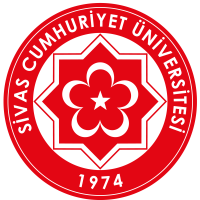
1964 yılında Sivas’ın Şarkışla ilçesine bağlı Harun köyünde doğdu. İlk tahsilini ailesiyle birlikte gittiği Berlin’de tamamladı. 1977’de yurda dönüp orta öğrenimine İstanbul’da başladı ve 1984’te Sivas Gazi Lisesi’nden mezun oldu. Aynı yıl Marmara Üniversitesi Atatürk Eğitim Fakültesi Türk Dili ve Edebiyatı Bölümü’ne girdi. 1988’de bu bölümden mezun oldu ve Marmara Üniversitesi Sosyal Bilimler Enstitüsü’nde yüksek lisansa başladı. “Enis Receb Dede- Hayatı, Edebî Şahsiyeti ve Dîvânı” adlı teziyle bu çalışmasını tamamladı. 1990 yılında Marmara Üniversitesi’nde başladığı doktora öğrenimini, 1994’te tamamladı. Doktora tezinin konusu, 15. asır Osmanlı şairlerinden Bedr-i Dilşâd’ın “Murad-nâme” adını koyduğu ve 1427 yılında Sultan II. Murad’a sunduğu mesnevisinin incelenmesi ve metninin ilmî usule göre hazırlanmasıydı. Keykâvus’un 1082 yılında oğlu için yazdığı ve “Kābus-nâme” adıyla tanınmış, mensur Farsça Nasîhat-nâme’nin, bazı ilâve ve çıkarmalarla yapılmış manzum bir tercümesi olan bu eser, 1997 yılında Millî Eğitim Bakanlığı tarafından yayımlandı.
1993 sonunda Celal Bayar Üniversitesi Fen-Edebiyat Fakültesi Türk Dili ve Edebiyatı Bölümü’nde araştırma görevlisi, 1995’te aynı bölümde "yardımcı doçent" unvanıyla öğretim üyesi oldu. 2000 yılında doçent, 2007’de profesör unvanını aldı. Doçentlik çalışmasının konusu, “Türk Edebiyatı’nda Hazret-i Ali Vecizeleri”dir. Yıllarca sürmüş bir araştırma ve çalışmanın sonucu olan bu eser, 2006 yılında Ankara’da yayımlandı.
1995’ten 2019 yılına kadar lisans seviyesinde Eski Türk Edebiyatı, Osmanlı Türkçesi, Eski Türk Edebiyatında Nesir, yüksek lisans ve doktora seviyesindeyse Metin Şerhi, Metin Neşri, Eski Türk Edebiyatının Kaynakları gibi çeşitli dersler verdi. İlim dalıyla ilgili yayınlanmış kitap, makale ve bildirileri bulunmaktadır.
Interests
Türk Dili ve Edebiyatı


 Web
Web
Hacı İbrahim Delice; 01.04.1964 Sivas'ın Yıldızeli ilçesine bağlı eski adıyla Kızıllı yeni adıyla Cumhuriyet köyü doğumlu. İlk öğrenimini köyü Kızıllı Köyü İlkokulu'nda, orta ve tahsilini de 1979 yılında Sivas'da İmam Hatip Lisesi'nde okudu.
1984 yılı Selçuk Üniversitesi Fen-Edebiyat Fakültesi Türk Dili ve Edebiyatı Bölümü mezunu. 1985 - 1989 yılları arası Konya'da Akşehir Reis Lisesi'nde, 1990 yılında da Sivas İmam-Hatip Lisesi'nde Türk Dili ve Edebiyatı Öğretmenliği yaptı.
1990'da Cumhuriyet Üniversitesi Fen-Edebiyat Fakültesi Türk Dili ve Edebiyatı Bölümü'nde araştırma görevlisi olarak göreve başladı. 1996 yılında Cumhuriyet Üniversitesi Fen-Edebiyat Fakültesi Türk Dili ve Edebiyatı Bölümü Yeni Türk Dili Anabilim Dalı'nda yardımcı doçent; 2004 yılında doçent; 2009 yılında da profesör oldu.
1992 yılında yüksek lisansını Prof. Dr. Bilal Yücel'in danışmanlığında Cumhuriyet Üniversitesi Sosyal Bilimler Enstitüsü'nde, 1996 yılında da doktorasını Prof. Dr. Ahmet Buran'ın danışmanlığında Fırat Üniversitesi Sosyal Bilimler Enstitüsü'nde tamamladı.
1991 - 1993 tarihleri arası Cumhuriyet Üniversitesi Rektörlük Türk Dili Bölümü Türk Dili Anabilim Dalı'nda, 1993 - 1995 tarihleri arası da Fırat Üniversitesi İnsani ve Sosyal Bilimler Fakültesi Türk Dili ve Edebiyatı Bölümü Yeni Türk Dili Anabilim Dalı'nda Öğretim Üyesi olarak görev yaptı.
2009 - 2010 yılları arası Cumhuriyet Üniversitesi Edebiyat Fakültesi Çağdaş Türk Lehçeleri Bölüm Başkanlığı, yine aynı fakültenin Edebiyat Bölümü Oğuz Grubu Şiveleri Anabilim Dalı Öğretim Üyeliği, yine 2011 - 2012 yılları arası Tunceli Rektör Yardımcılığı, 2012 - 2014 yılları arası da aynı üniversitenin İletişim Fakültesi Dekanlığı görevlerinde bulundu.
2014'de 2547 sayılı kanunun 40/b maddesi uyarınca Bartın Üniversitesi'ne
görevlendirilen Prof. Dr. Hacı İbrahim Delice, 18.08.2017 tarihinde Yüksek Öğretim Kurulu kararıyla yeniden Bartın Üniversitesi Edebiyat Fakültesi Dekanlığına vekaleten atanmıştır.
Orta seviyede Farsça, başlangıç seviyesinde İngilizce ve Arapça bilen Prof. Dr. Hacı İbrahim Delice, evli ve üç çocuk babasıdır.

I have research experience, scholarly work, and expertise in Early Period Turkic Arts and Archaeology of Central and Inner Asia and Eastern Europe; Pre-Islamic Turkic Art; Göktürk-period art; 10th–20th century Asian Turkic Architecture; and Eastern European Turkic Art (with a particular focus on Khazar-period art).




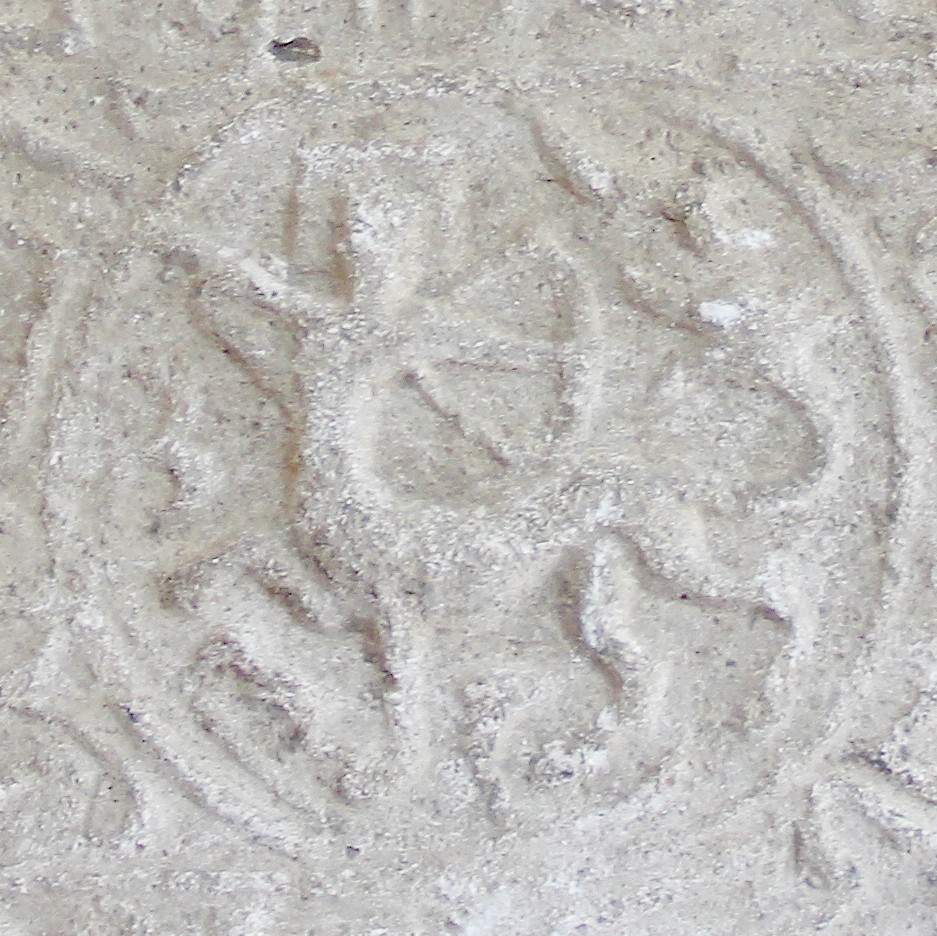
1967 yılında Çorum’un Alaca ilçesinde doğdu. İlk ve orta öğrenimini Sungurlu’da tamamladı. 1990 yılında Gazi Üniversitesine bağlı Gazi Eğitim Fakültesinden mezun oldu. 1991-1992 yılında askerlik yükümlülüğünü yerine getirdi. 1992 yılının Ağustos ayında Ankara Üniversitesi TÖMER Dil Öğretim Merkezinde Türkçe Okutmanlığı stajı yaptı. Stajını tamamladıktan sonra Kasım 1992’de aynı kuruma bağlı TÖMER’in Samsun Şubesinde kadrolu Türkçe okutmanı ve Türkçe Bölümü Başkanı olarak göreve başladı. 1993 yılının Nisan ayında TC Dış İşleri Bakanlığı aracılığıyla Kazakistanlı diplomatlara Türkçe öğretmek üzere Kazakistan’ın Almatı şehrinde 9 ay süreyle görev yaptı. Almatı’daki görevi esnasında Kazak Dili ve Edebiyatı üzerine araştırmalar yaptı. Görev süresi sona erdikten sonra TÖMER’deki görevine döndü. Daha sonra A.Ü. TÖMER Gaziantep Şubesine tayin edilerek Yabancı Diller Bölüm Başkanı ve Türkçe Okutmanı olarak bir yıl çalıştı.
1994 yılında A.Ü. TÖMER’in Ankara’daki Tunalı Hilmi Şubesinde Türk Lehçeleri Bölümü Başkanı olarak görevlendirildi ve A.Ü. TÖMER Türk Lehçeleri ve Edebiyatları Bölümünce çıkarılan Türk Lehçeleri ve Edebiyatları Dergisinin Yazı İşleri Müdürü olarak görev yaptı. Ayrıca A.Ü.TÖMER bünyesinde kurulan Bilimsel Araştırma Kurulu (BİLAK) Başkanlığını yürüttü. Türk Dünyasının önde gelen dilci ve edebiyatçılarının makalelerinin yayımlanmasında: Kazakların ünlü şairi Abay Kunanbayev, JambılJabayev ve yazar Muhtar Awezov, Türkmenlerin ünlü şairi Mahtumkulu, Azerbaycan’ın ünlü şairi Bahtiyar Vahapzâde ve Ali ŞirNevâî gibi Türk Dünyasının dil ve edebiyat ustaları adına özel sayıların çıkarılmasında katkıları oldu.
Ahmet Güngör, Bilimsel çalışmalarını Türkiye Türkçesi’nin öğretimi, Kazakça ve Kırgızca üzerine yoğunlaştırmıştır. Kırgız Milli Devlet Üniversitesinde Kırgız Dilbilimi alanında Yüksek Lisansını (2003), H. Karasayev Bişkek Sosyal Bilimler üniversitesi, Türkoloji Ana Bilim Dalında ‘Kırgızca ve Türkçe’de Hastalık Adlarıyla İlgili Örtmece (Euphemism) Sözler’ (2006) adlı doktora tezini tamamlamıştır.1998-2004 yılları arasında Kırgızistan Türkiye Manas Üniversitesi, Modern Diller Yüksek Okulu, Türkçe Hazırlık Sınıfları Koordinatörü olarak görev yaptı. 2004-2005 Öğretim yılından itibaren Modern Diller Yüksek Okulunda ‘Dilbilime Giriş’, ‘Kırgızca’dan Tükçe’ye Sözlü Çeviri Uygulamaları’ ve ‘Kırgızca’dan Türkçe’ye Anında Çeviri Uygulamaları’ derslerini verdi.
2009 yılında Kırgızistan-Türkiye Manas Üniversitesinden ayrılarak Sinop Üniversitesi, Fen-Edebiyat Fakültesi, Türk Dili ve Edebiyatı Bölümü kurucu öğretim üyesi olarak görevlendirildi. 2009-2012 yılları arası Sinop Üniversitesinde görev yaptı.
2012 yılında Giresun Üniversitesi, Fen- Edebiyat Fakültesi, Türk Dili ve Edebiyatı Bölümünde öğretim üyesi olarak görev aldı. Ayrıca GRÜ TÖMER’i kurarak müdürlüğünü yürüttü. 2016-2019 yılları arası Ahmet Yesevi Uluslararası Türk-Kazak Üniversitesinde Hazırlık Fakültesi Dekanı olarak görev yaptı.
Ahmet Güngör’e Kazakistan’ın Çimkent şehrinde yer alan Bölgesel Sosyal Girişimcilik Üniversitesi (Regional Social – Innovational University www.rsiu.kz/ru) tarafından “Profesör” (26.05.2017), Uluslararası Bilişim Akademisi (International İnformatization Academy, IIA, Kazakistan/Almatı) tarafından “Akademik” unvanına layık görülerek akademi üyeliğine kabul edilmiştir (06.06.2017). Ayrıca Kırgızistan’ın İ. Arabayev Kırgız Devlet Pedagoji Üniversitesi, Senato Meclisi 71 no’lu kararıyla “Fahri Profesörlük” unvanı verilmiştir ( 27.04.2018).
Ahmet Güngör Uluslararası Dünya Dilleri Üniversitesinin kurulmasına yönelik proje çalışmalarına –ekip arkadaşlarıyla- devam etmektedir.
Evli ve üç çocuk babasıdır.

ASSOCIATE PROFESSOR FABIO L. GRASSI
ESSENTIAL CURRICULUM AND PUBLICATIONS
Born in Rome in 1963.
Summer scholarships to study in Turkey for the years 1985 and 1988. Degree in Arts, 1986. Scholarship for PhD from 1990 to 1993.
PhD, 1994 (thesis on “Italy and the Turkish Question 1919-1923: public opinion and foreign policy”). Winner of post-doctoral scholarship, 1997.
From 2005 to 2008 courses of Contemporary Turkish History for the master program in Mediterranean Civilizations and Societies, “Gabriele D’Annunzio” University of Chieti-Pescara, Italy.
From 2005 to 2009 Senior lecturer in the Department of Didactic of Foreign Languages (Faculty of Sciences of Education) of Yıldız Technical University - Istanbul;
In 2010 and 2011 Senior lecturer in the Department of Humanities and Social Studies (Faculty of Arts and Sciences).
Since December 2011 Assistant Professor in History of Eastern Europe in Sapienza University - Roma. Courses of History of Eurasia, History of Cooperation and Development, Turkish Language and Contemporary History (in English).
Enabled, in the call 2012, by the competent national commissions to be ASSOCIATE PROFESSOR in FOUR academic fields: Modern History, Contemporary History, Near East Cultures and History of International Relations;
Enabled, in the call 2016, by the competent national commissions to be ASSOCIATE PROFESSOR and FULL PROFESSOR in History of International Relations and to be ASSOCIATE PROFESSOR in Contemporary History.
From February 2013 to August 2015 Director of the BAU Center of Eurasian Studies in Sapienza University.
Since January 2015 Official Representative of the Rector of Sapienza University in the Executive Board of EURAS (Union of Eurasian Universities), later counselor for EURAS affairs.
In September 2015 visiting professor by al-Farabi University of Almaty (course on “European History and Culture from the Middle Age to the present days”).
Since December 2016 Counselor for the Iranian and Turkic countries in the governance of Sapienza University.
Junior Research Fellow of the Sapienza Superior School of Advanced Studies for the academic years 2020-2023.
Since June 2020 Editor in Chief of the new double-blind peer reviewed "EURAS Journal of Social Sciences".
Professorship honoris causa in Political Sciences from the International University of Struga (Macedonia).
Fully in service as ASSOCIATE PROFESSOR in History of Eastern Europe since 3 September 2019.
Some ninety publications in Italian - among them three great monographs, all translated in Turkish, one also in English - and more than ten publications in English or Turkish; participation to and/or organization of many conferences; many lectures (in Italian, English, Turkish and French); member of the commission charged by the Turkish State school authorities to draw up a curriculum in the Italian language for Turkish high schools; interpreter and translator; supervisor/editor of the translation in Turkish of 3 Italian books (2 novels and 1 history book), published in 2007; member of an editorial board; referee of various Turkish reviews; member of several scientific associations; participation to group researches funded by the Ministry of High Education or by Sapienza University.
Since 1 May 2023 ASSOCIATE PROFESSOR in History of International Relations.
KNOWLEDGE OF LANGUAGES:
Italian – Mother tongue;
English – Very Good (experience of teaching in this language)
Turkish – Very Good (experience of teaching in this language);
Azerbaijani Turkish – Good;
French – Good;
Romanian – Fair; Spanish - Fair
WORKS:
a) Monographs:
1. L’Italia e la Questione Turca 1919-1923. Opinione pubblica e politica estera, [Italy and the Turkish Question 1919-1923. Public Opinion and Foreign Policy], Torino Zamorani, 1996, pp. 270;
- İtalya ve Türk Sorunu 1919-1923. Kamuoyu ve dış politika, İstanbul, Yapi Kredı Yayınları, 2003, 2010 (Turkish translation);
2. Atatürk. Il Fondatore della Turchia Moderna [Atatürk. The Founder of Modern Turkey], Roma, Salerno, 2008, new edition 2020, pp. 444;
- Atatürk, İstanbul, Turkuvaz Kitap, 2009 (Turkish translation; reprint İstanbul, Doğan Kitap, 2018);
3. Noterelle sulla Lingua Turca [Short Notes about Turkish language], Vigevano, Micron, 2008, pp. 60;
4. Turchia e Balcani. Materiali per lo Studio degli Anni Recenti [Turkey and Balkans. Materials for the Study of the Recent Years], Cluj-Napoca, Napoca Star, 2012, p. 174;
5. Una Nuova Patria. L’Esodo dei Circassi verso l’Impero Ottomano [A new Homeland. The exodus of the Circassians towards the Ottoman Empire], Istanbul, ISIS, 2014, pp. 281;
- Yeni bir Vatan. Çerkeslerin Osmanlı İmparatorluğuna zorunlu Göçü (1864), İstanbul, Tarihçi Kitabevi, 2017 (shortened Turkish translation);
- A New Homeland. The massacre of the Circassians, their Exodus to the Ottoman Empire, their place in modern Turkey, Istanbul, Istanbul Aydın University Publications, 2018 (shortened English translation).
b) Editings:
1. Traduzione e Didattica. Contributi per l’Insegnamento dell’Italiano in Turchia [Translation and Didactic. Contributions for the teaching of Italian language in Turkey], pp. 34;
2. (together with Esra Danacıoğlu), Italia e Turchia tra Passato e Futuro. Un Impegno Comune, una Sfida Culturale [Italy and Turkey between Past and Future. A Common Aim, a Cultural Challenge], Roma, Edizioni Nuova Cultura, 2009, pp. 308;
3. (together with Roberto Sciarrone), I Bulgari e la Bulgaria in Europa [The Bulgars and Bulgary in Europe], Roma, Aracne, 2014, pp. 160;
4. Roma’ya Yürüşünün 100. Yılı. İtalya’da faşizmin iktidara gelişi [One hundred years after the March to Rome. The rise to power of fascism in Italy], monographic dossier, “Toplumsal Tarih” [Social History], n. 346, Ekim [October] 2022, pp. 44-60;
5. (together with Fulvio Bertuccelli and Mihaela Gavrila), Minorities and Diasporas in Turkey: public images and issues in education, Roma, Sapienza Università Editrice, 2023.
c) Proceedings of conferences and Contributions to books:
1. La Definizione dei Confini della Turchia, 1919-1974 [The Settlement of Turkey’s Borders, 1919-1974], in Marta Petricioli / Alberto Tonini (eds.), Identità e Appartenenza in Medio Oriente [Identity and Belonging in the Middle East], Firenze, Università degli Studi di Firenze, Dipartimento di Studi sullo Stato, 1998, pp. 67-75;
2. L’Italia di fronte al Crollo della Pace di Sèvres: una Presunta Grande Potenza alla Prova (settembre-ottobre 1922) [Italy Facing the Collapse of the Peace of Sèvres: a Supposed Great Power Put to the Test (September-October 1922)], in George Cipaianu / Vasile Vesa (eds.), La fin de la Première Guerre mondiale et la nouvelle architecture gèopolitique européenne, Cluj-Napoca, Presses Universitaires de Cluj, 2000, pp. 95-106;
3. Turchia: Perdere un Impero, Sopravvivere come Stato [Turkey: to Lose an Empire, to Survive as a State], in Marco Dogo (ed.), Schegge d’Impero, Pezzi d’Europa. Balcani e Turchia fra Continuità e Mutamento 1804-1923 [Splinters of Empire, Pieces of Europe. The Balkans and Turkey Between Continuity and Change 1804-1923], Gorizia, Libreria Editrice Goriziana, 2006, pp. 215-241;
4. Sèvres e Losanna: Condanne Esplicite, Condanne Silenziose [Sèvres and Lausanne: Open Condemnations, Silent Condemnations], in Monica Ruocco (ed.), Pace e Guerra nel Medio Oriente in Età Moderna e Contemporanea. Atti del Convegno SeSaMO – Lecce 2004, Galatina, Congedo, 2008, vol. I, pp. 195-205;
5. Garibaldi e Garibaldini a Costantinopoli e nell’Impero Ottomano: Conoscenze Attuali, Piste per Future Ricerche [Garibaldi and Garibaldians in Costantinople and Ottoman Empire: Today Knowledge, Paths for Future Researches], in Stefania Bonanni (ed.), Garibaldi: Cultura e Ideali. Atti del LXIII Congresso di Storia del Risorgimento (Cagliari, 11-15 ottobre 2006) [Garibaldi: Culture and Idealities. Proceedings of the LXIII Congress of History of Risorgimento (Cagliari, 11-15 October 2006)], Roma, Istituto Per la Storia del Risorgimento Italiano, 2008, pp. 419-440;
6. Da un Altro Stretto. L’Eco del terremoto di Messina a Istanbul [From Another Strait. The Echo of Messina Earthquake in Istanbul], in Giovanna Motta (ed.), La Città Ferita. Il Terremoto dello Stretto e la Comunità Internazionale [The Wounded City. The Strait Earthquake and the International Community], Milano, FrancoAngeli, 2008, pp. 150-158;
7. Insegnare Insieme Lingua e Contenuti Letterari [Teaching Together Language and Literatury Texts], in Fabio L. Grassi (ed.), Traduzione e Didattica. Contributi per l’Insegnamento dell’Italiano in Turchia, İstanbul, Yıldız Teknik Üniversitesi Yayınları, 2009, pp. 15-20;
8. Gli Ottomani e i Secoli delle Conquiste nelle Pagine degli Osservatori Occidentali [The Ottomans and the Centuries of the Conquests in the Pages of the Western Observers], in Esra Danacıoğlu / Fabio L. Grassi (eds.), Italia e Turchia tra Passato e Futuro. Un Impegno Comune, una Sfida Culturale, Roma, Edizioni Nuova Cultura, 2009, pp. 55-68;
9. Atatürk’ün Eserinin Yorunmlanmasına Yabancı Bilim Adamlarının Katkısı [The Contribution of the Foreign Men of Culture in the Intepretation of Atatürk], in Türkiye Barolar Birliği [Union of the Turkish Lawyers], Uluslararası Atatürk’ü Çağdaş Yorumlama ve Anma Programı – 1. XXI. Yüzyılda Atatürk’ü Düşünmek [International Program of Contemporary Interpretation and Remembrance of Atatürk 1 - Thinking Atatürk in 21th Century], Ankara, Türkiye Barolar Birliği Yayınları, 2010, pp. 24-29;
10. Trablusgarp’tan Kurtuluş Savaşı’na İtalyan Politikasında İzmir [Smyrna in Italian Policy from Tripoli to the War of Liberation], in Oktay Gökdemir (ed.), Kuva-yı Milliye’nin 90. Yılında İzmir ve Batı Anadolu. Uluslararası Sempozyum Bildirileri 6-8 Eylül 2009 [Proceedings of the Symposium on Smyrna and Western Anatolia in the 90th Anniversary of the National Forces, 6-8 September 2009], İzmir, İzmir Büyükşehir Belediyesi, 2010, vol. I, pp. 94-106;
11. La perdita della Romania nella Memoria Storica Turca [The Loss of Romania in the Turkish Historical Memory], in G. Mandrescu / G. Altarozzi (coordinators), Imagine Reflectata. Momente de Istorie Comparata. Lucrările Sesiunii Italo-Române, Cluj-Napoca - Alba Iulia, 8-9 Septembrie 2008 [The Reflected Image. Moments of Compared History. Proceedings of the Italo-Romanian Session, Cluj-Napoca - Alba Iulia, 8-9 September 2008], Cluj-Napoca, Accent, 2010, pp. 54-61;
12. L’Adriatico per l’Impero Ottomano: un Limes e una Tentazione [The Adriatic Sea for the Ottoman Empire: a Limes and a Temptation], in Stefano Trinchese / Francesco Caccamo (eds.), Rotte Adriatiche. Tra Italia, Balcani e Mediterraneo [Adriatic Routes. Among Italy, Balkans and Mediterranean], Milano, FrancoAngeli, 2011, pp. 32-41;
13. In Turchia, Avventura e Incanto nella Steppa [In Turkey. Adventure and Spell in the Steppes] (editorial title), in Giovanna Motta (ed.), “Raccontami una Storia…”. Fiabe, Leggende e Miti nella Memoria dei Popoli [“Tell me Something…” Tales, Legenda and Myths in the Memory of the Peoples], Milano, FrancoAngeli, 2011, pp. 202-208;
14. Annotazioni sulla Storiografia Italiana in Tema di Turchia Contemporanea [Notes on Italian Historiography relating Contemporary Turkey], in Giovanna Motta (ed.), Studi sull’Europa Orientale. Un bilancio storiografico. Una nuova generazione di storici (1970-2010) [Essays on Eastern Europe. A historiographical balance. A new generation of historians (1970-2010)], Firenze, Passigli, 2012, pp. 73-79;
15. Nazione, Emancipazione, Modernizzazione. Halide Edip Adıvar e Yakup Kadri Karaosmanoğlu di fronte alla Rivoluzione Kemalista [Nation, Emancipation, Modernization. Halide Edip Adıvar and Yakup Kadri Karaosmanoğlu face to Kemalist revolution], in Giovanna Motta (ed.), L’Idea di Nazione e l’Impero fra Storia e Letteratura [Tha Idea of Nation and Empire between Hitory and Literature], Roma, Edizioni Nuova Cultura, 2013, pp. 109-116;
16. Niçin Trablusgarp? İtalyan Çıkarması arkasındaki Siyaset ve Kültür [Why Tripoli? Politics e Culture behind Italian landing], in Mehmet Ersan / Nuri Karakaş (eds.), Osmanlı Devleti’nin Dağılma Sürecinde Trablusgarp ve Balkan Savaşları 16-18 Mayıs 2011 / İzmir. Bildiriler [Tripoli and the Balkan Wars in the process of dissolution of the Ottoman State. 16-18 May Smyrna. Relations], Ankara, Türk Tarih Kurumu, 2013, pp. 37-47;
17. Le Guerre Balcaniche per i Turchi: “Non riaprire quella ferita!” [The Balkan Wars for Turks: "Don't reopen that wound!"], in Giuseppe Motta (ed.), Le Guerre Balcaniche e la Fine del “Secolo Lungo”. Atti del convegno di Târgu Mureş [The Balkan Wars and the end of the "Long Century". Proceedings of the conference held in Târgu Mureş], Roma, Nuova Cultura, 2013, pp. 117-141.
18. L’Oriente Ottomano e la Politica Napoleonica [The Ottoman East and Napoleon’s policy], in Giovana Motta (a cura di), L’Imperatore dei Francesi e l’Europa Napoleonica [The Emperor of the French and Napoleon’s Europe], Roma, Edizioni Nuova Cultura, 2014, pp. 195-210;
19. L'irrisolto Fattore Turco [The Unsolved Turkish Factor], in Gabriele Jori (a cura di), Contributi alla Tavola Rotonda "Verso una Comunità Euro-Mediterranea. L'Università per l'Europa. Verso l'Unione Politica". Sessione EuroSapienza [Contributions to the Round Table “Towards an Euro-Mediterranean Community. The University for Europe. Towards political union. EuroSapienza session], Roma, 20 marzo 2014, Roma, Università "La Sapienza", 2014, pp. 43-49;
20. An Anti-Nationalistic Dream: Ottomanism, in Antonello Biagini / Giovanna Motta (eds.), Empires and Nations from the Eighteen to the Twentieth Century, Newcastle, Cambridge Scholars Publishing, 2014, vol. I, pp. 74-82;
21. Kurtuluştan Sonraki Haftalarda İzmir’e Dair İtalyan Görüş ve Projeleri [Italian opinions and projects on Smirne in the Weeks following the Liberation] in Murat Alper Parlak (ed.), Kurtuluş ve Kuruluşun Sembol Kenti İzmir [Smirne, Symbol city of the liberation and refoundation], Ankara, Atatürk Araştırma Merkezi, 2015, pp. 125-140;
22. The Turkish Intellectuals and the Great War, in Antonello Biagini / Giovanna Motta (eds.), The Great War. Analysis and Interpretation, Newcastle, Cambridge Scholars Publishing, 2015, vol. II, pp. 179-188;
23. Europe and the Greater Asia in the Past and Now, in Materials of International Scientific-Theoretical Conference on Actual Problems of World History, November 19-20th, 2015, Almaty, Al-Farabi Kazakh National University, 2015, pp. 38-39;
24. Il Cibo dei Popoli Turchi e La Tavola dei Sultani [Food of the Turkic peoples and the table of the sultans], in Giovanna Motta (ed.), I tempi e i Luoghi del Cibo [Times and places of food], Roma, Edizioni Nuova Cultura, 2016, pp. 213-224;
25. Jews and Hebraism in Republican Turkey, in Giuseppe Motta (ed.), Dall'Antigiudaismo all'Antisemitismo. Saggi sulla questione ebraica fra XIX e XX secolo [From anti-judaism to anti-semitism Essays on the Jewish questionin XIX-XX centuries], Roma, Edizioni Nuova Cultura, 2016, pp. 127-143;
26. Ernesto Buonaiuti: İman, Hürriyet, Yalnızlık [Ernesto Buonaiuti: faith, freedom, loneliness], in Fulya Bayraktar (ed.), Hikmetin İzinde. Kenan Gürsoy'a Armağan [On the path of wisdom. Tribute to Kenan Gürsoy], Ankara, Aktif Düşünce Yayıncılık, 2016, pp. 617-621;
27. La Situazione nel Medio Oriente [The situation in the Middle East], in Ufficio Storico dello Stato Maggiore della Difesa (ed.), L'Italia e la Grande Guerra. 1916. Evoluzione geopolitica, tattica e tecnica di un conflitto sempre più esteso [Italy and the Great War. 1916. Geopolitical, tactical and technical evolution of an increasingly spreading conflict], proceedings of the conference held in the Gendarmerie Academy, 6-7 December 2016, Roma, Stato Maggiore della Difesa, 2017, pp. 47-63;
28. The Burden of Memory. The emergence of the past in the art of Chalayan, in Giovanna Motta / Antonello Biagini (eds.), Fashion through History: Costumes, Symbols, Communications, Newcastle upon Tyne, Cambridge Scholards Publishing, vol. II, 2017, pp. 298-305;
29. Invisible Scapegoats: the Turkish dönmes, in Giuseppe Motta (ed.), Dynamics and Policies of Prejudice from the Eighteenth to the Twenty-first Century, Newcastle upon Tyne, Cambridge Scholards Publishing, 2018, pp. 123-133;
30. I Fronti Mediorientale e Anatolico-caucasico [The Middle East and Anatolia-Caucasus fronts], in Ufficio Storico dello Stato Maggiore della Difesa (ed.), Il 1917. L'anno della svolta. Congresso di studi storici internazionali. Roma 25 - 26 ottobre 2017 [1917. The turning point year. Conference of international historical studies. Rome, 25-26 October 2017], Stato Maggiore della Difesa - CASD - Centro Alti Studi per la Difesa, 2018, pp. 347-362;
31. Russia e Turchia. Un passato non solo di inimicizia [Russia and Turkey. A past not consisting only in feud], in Gabriele Natalizia (ed.), La Russia e l’Occidente. Dinamiche politiche a cento anni dalla Rivoluzione d’Ottobre [Russia and the West. Political dynamics one hundred years after the October revolution], Milano, Vita e Pensiero, 2018, pp. 59-65;
32. On Turkish Historiography, in Andrea Ciampani / Romano Ugolini (eds.), The Great War. A European commitment of Research and Reflection, Roma – Soveria Mannelli, Istituto Storico del Risorgimento Italiano – Rubbettino, 2019, e-book, pp. 151-167;
33. La Moda lungo la Via della Seta [Fashion along the Silk Road], in Giovanna Motta (ed.), La Forza della Moda. Potere, rappresentazione, comunicazione [The force of fashion. Power, representation, communication], Roma, Edizioni Nuova Cultura, 2019, pp. 279-288;
34. Intellettuali Turchi e Dimensione Mediterranea [Turkish Intellectuals and Mediterranean Dimension], in Alberto Aghemo / Rossella Pace (eds.), Mediterraneo. Tradizione, patrimonio, prospettive. Una proposta per l’innovazione e lo sviluppo [Mediterranean. Tradition, heritage, perspecives. A proposal for innovation and development], Roma, Fondazione Giacomo Matteotti, 2019, pp. 115-125;
35. L'Italia e i Rapporti Interalleati nella Questione Turca [Italy and Inter-Allied Relations in the Turkish Question], in Ufficio Storico dello Stato Maggiore della Difesa (ed.), Il 1919. Un’Italia vittoriosa e provata in una Europa in trasformazione [1919. A victorious and wounded in an Europe under transformation], Roma, Ministero della Difesa, Roma, pp. 349-361;
36. Costantinopoli, Mosca e Dintorni. Dalla peste storica alle epidemie più recenti [Costantinople, Moscow and surroundings. From the historical plague to the most recent epidemic], in Giovanna Motta (ed.), Pandemie [Pandemics], Roma, Fondazione Giacomo Matteotti, pp. 85-95;
37. The Cultural and Political Claims of the Caucasian Minorities in Turkey, in Carlo Frappi / Paolo Sorbello (eds.), Eurasiatica 15. Armenia, Caucaso e Asia Centrale. Ricerche 2020, Venezia, Edizioni Ca' Foscari, 2020, pp. 224-236;
38. Ottoman Demographic Engineering before and during WWI, in Aleksandar Rastović / Andrea Carteny / Biljana Vučetić, War, Peace and Nation Building (1853-1918), Belgrade, The Institute of History Belgrade and Sapienza University of Rome, 2020, pp. 225-237;
39. Dove si Combatte: Anatolia [Where people fight: Anatolia], in Alessandro Vagnini (ed.), Tra il Bosforo e l'Egeo. La marina italiana e la fine dell'Impero Ottomano 1919-1923 [Between Bosphorus and Aegean. The Italian navy and the end of the Ottoman Empire 1919-1923], Roma, Ufficio Storico della Marina Militare, 2021, pp. 84-196;
40. La questione degli Stretti nel quadro delle relazioni turco-sovietiche tra 1919 e 1923 [The Question of the Straits in the frame of the of the Turkish-Soviet relations between 1919-1923], in Gianluca Borzoni / Barbara Onnis / Christian Rossi (a cura di), Momenti di Storia Internazionale del Novecento. Diplomazia geopolitica, soft power, cooperazione [Pages of international history in the XXth century. Geopolitical diplomacy, soft power, cooperation], Milano, FrancoAngeli, 2021, pp. 39-55;
41. Galatasaray, non solo una squadra di calcio [Galatasaray, not only a football team], in Giovanna Motta (ed.), Raccontare il Cambiamento. Cultura politica, contesti economico-sociali, casi di studio nella moda [Telling the change. Political culture, economic-social contexts, case studies in the field of fashion], Soveria Mannelli, Rubbettino, 2022, pp. 115-122;
42. Lo scambio di comunità tra Grecia e Turchia e l’azione di Nansen per conto della SdN [The exchange of communities between Greece and Turkey and Nansen’s action on behalf of the League of Nations], in Alessandro Vagnini (ed.), L’Italia e la Società delle Nazioni (1919-1929). Dinamiche di un nuovo sistema internazionale [Italy and the League of Nations (1919-1929). Dynamics of a new international system], Roma, Edizioni Nuova Cultura, 2022, pp. 63-92;
43. Brevi Note sugli Archivi in Turchia, con particolare riferimento alle relazioni internazionali [Short notes on the archives in Turkey, with particular reference to internatioanl relations], in Giovanna Motta (ed.), Documenti d’Archivio e Altre Fonti. La ricerca, il metodo, la memoria del passato [Archival documents and other sources. Research, method, memory of the past], Roma, Edizioni Nuova Cultura, 2022, pp. 115-121 and 261-263 (notes);
44. Un Burbero Poliedrico: Arnoldo Foà [A multifaceted curmudgeon], in August Ammerlaan et alii (eds.), Un Letterato in Viaggio: liber amicorum per Raniero Speelman [A traveling man of culture: liber amicorumin honor of Raniero Spellman], Rotterdam, Ridderprint, 2023, pp. 258-265.
d) Essays and articles:
1. Sokollu Mehmed Pascià, il Gran Visir di Solimano [Sokollu Mehmed Pasha, the Grand Vizir of Soliman], “Islàm”, year VII, January-March 1988 (editorial title), pp. 25-33;
2. Tentativo Cinquecentesco di un Canale Volga - Don nel Quadro dei Rapporti tra la Russia e l’Impero Ottomano [An Attempt to Build a Volga-Don Canal in the Context of Relations between Russia and the Ottoman Empire], “Islàm”, year VIII, October-Dicember 1989 (editorial title), pp. 253-263;
3. La Strana Alleanza: Turchia Kemalista e Russia Sovietica 1919-1922 [The Strange Alliance: Kemalist Turkey and Soviet Russia 1919-1922], “Annali dell’Istituto Ugo La Malfa”, volume V, 1989 (summary of degree thesis), pp. 173-196;
4. Il Kemalismo: un’Esperienza fuori dagli Schemi [Kemalism: an Experience outside the Pattern], “Annali dell’Istituto Ugo La Malfa”, volume VI, 1990-91, pp. 203-283;
5. Da qui si Ricomincia: una Lettura di ‘‘Fuori dall’Occidente’’ di Alberto Asor Rosa [It Recommences from Here: a reading of “Outside the West” by Alberto Asor Rosa],”Annali dell’Istituto Ugo La Malfa”, volume VIII, 1993, pp. 365-384;
6. Verso la Quinta Sponda: la Gestione degli Affari Turchi da Parte Italiana durante la Prima Guerra Mondiale [Towards the Fifth Shore: the Italian running of Turkish affairs during the First World War], “Annali dell’Istituto Ugo La Malfa”, volume IX, 1994, pp. 233-246;
7. Le Battaglie Diplomatiche Relative alle Occupazioni Italiane in Turchia nel 1919 [The Diplomatic Conflicts Relating to the Italian Occupations in Turkey in 1919], “Annali dell’Istituto Ugo La Malfa”, volume X, 1995, pp. 277-304;
8. Il Ruolo dell’Italia nella Crisi Balcanica del 1912-13 [The Role of Italy in the Balkan Crisis of 1912-13], “Annali dell’Istituto Ugo La Malfa”, vol. XII, 1997, pp. 375-381;
9. Roma - Ankara, che Fare dopo il Grande Freddo? [Rome – Ankara, What is to Be Done After the Big Chill?], “liMes”, n. 1/1998, “L’Italia Mondiale nella Sfida tra le Nazioni” [Mondial Italy in the Challenge among the Nations], March 1998 (editorial title), pp. 191-200;
10. E se Fosse Haydn…, “Cenobio”, year L, April-June 2001, pp. 158-169;
- The Best Composer? Why not Haydn..., “Haydn Society of Great Britain”, 2002 (summary in English), pp. 15-25;
- En İyi Besteci mi? Niye Haydn Olmasin?, “Andante”, January-February 2005, year 2 n. 14 (a Turkish version, with supplementary inset on the oratorio “The Seasons”), pp. 2-6;
11. Unione Europea, Turchia e Questione Armena - European Union, Turkey and Armenian Question, “Storia Politica e Cooperazione Internazionale - International History Politics and Cooperation”, year I n. 2, September 2001, pp. 27-29 (with the pseudonym Mario Rossi);
12. Diplomazia Segreta Italo-Turca dopo la Prima Guerra Mondiale; Convergenze ed Equivoci (1919-1920) [Secret Diplomacy Between Italy and Turkey following the First World War; Convergences and Misunderstandings (1919-1920)], ‘‘Clio’’, year XXXIX, n. 1, January-March 2003, pp. 51-83;
13. I Profitti di un Fallimento: Politica e Affari Segreti dell’Italia in Turchia tra 1920 e 1923 [The Gains of a Failure: Politics and Secret Affairs of Italy in Turkey between 1920 and 1923], ‘‘Rassegna Storica del Risorgimento’’, year XC, fasc. I, January-March 2003, pp. 47-86;
14. La Turchia nella Politica Francese e Italiana tra le due Guerre [Turkey in the Policy of France and Italy Between the two World Wars], “Transylvanian Review”, vol. XV, N. 1, Spring 2006, pp. 129-140;
15. Sardinya Krallığı’nın Kırım Savaşına Katılması [The Participation of the Kingdom of Sardinia in the Crimean War], “Toplumsal Tarihi” [Social History], n. 151, Temmuz [July] 2006, pp. 80-86;
16. La Turchia e la Scelta Occidentale [Turkey and her pro West Choice], “Nike. La Rivista delle Scienze Politiche”, Numero Unico 2008, “La fine della Seconda Guerra Mondiale e il Conflitto Est-Ovest” (Monographic Issue 2008, “The End of WWII and the Clash East-West”), pp. 181-197;
17. Il Grande Condottiero è sempre in Sella! [The Great Warlord is always on his saddle!], “Limes”, n. 4/2010, “Il Ritorno del Sultano” [The Sultan is Coming back], September 2010 (editoral title), pp. 175-181;
18. Lo Sguardo Turco sul Caucaso dalla Fine dell’Unione Sovietica ad Oggi [The Turkish View on Caucasus from the End of Soviet Union to Present Times], “Eurostudium3W”, digital review of Roma Sapienza University, n. 28, July-September 2013 (actually issued in January 2014), http://www.eurostudium.uniroma1.it/rivista;
19. Gallipoli cento Anni dopo. La vicenda e il retaggio [Gallipoli one hundred years after. The event and the heritage], “Il Nodo di Gordio”, anno IV, n. 9, September 2015, pp. 76-85;
20. La Libertà in Turchia, ovvero Avventure e Disavventure di una bella Ragazza [Freedom in Turkey, or adventures and misadventures of a beautiful girl], “Il Nodo di Gordio”, year V, n. 12, September-December 2016, "Il Valzer delle Potenze. Danzando sul Titanic" [The Walz of the Powers. Dancing on Titanic], pp. 138-143;
21. Smirne dopo il Grande Incendio del 1922. Speranze italiane e concreti sviluppi [Smyrna after the 1922 Great Fire. Italian Hopes and Actual Developments], “Dimensioni e problemi della Ricerca Storica. Rivista del Dipartimento di Storia, Culture, Religioni di Sapienza Università di Roma”, n. 2.2016, printed in March 2017, pp. 255-272;
22. Contro la "malizia dei dotti". Radici e sviluppi dell'erdoğanismo [Against the "malice of the learned people". Roots and developments of Erdoğanism], "Passato e Presente" (A-rated scientific journal), n. 103, January-April 2018, pp. 5-16;
23. Islam ribelle nei Balcani ottomani: vita, morte ed eredità spirituale dello sceicco Bedreddin [Rebel Islam in the Ottoman balkans: life, death and spiritual heritage of the sheikh Bedreddin], "SMSR - Studi e Materiali di Storia delle Religioni" (A-rated scientific journal), n. 84/1 - 2018, pp. 350-366;
24. Erdoğan non perderà il potere a causa della crisi valutaria [Erdoğan will not lose his power due to the currency crisis] “Il Nodo di Gordio”, year VII n. 17, May-August 2018, "La Forza di Demetra. Il grande gioco dell'alimentare nel XXI secolo" [Demetra's force. The great game on food in XXI century], pp. 151-157;
25. (with Andrea Marcigliano) La Russia è vicina. Le prospettive delle relazioni italo-russe nell'ottica dell'attuale situazione geopolitica [Russia is near. The perspectives inItalo-Russian relations in the frame of the current geopolitical situation], “Il Nodo di Gordio”, year VIII n. 18, January-April 2019,"Dialoghi Mediterranei. Strategie per energie, infrastrutture ed agroalimentare", pp. 137-142;
26. Molti Nodi Nascosti nella Terra di Gordio [Many hidden knots in the land of Gordion], "Il Nodo di Gordio", year VIII n. 20, May-August 2019, "Olympia. L'eco delle Alpi", pp. 142-147;
27. Italy’s Intervention to WWI. The “Home Front” and the Psychological Heritage, in әл-Фараби Атындағы Қазақ Ұлттық Университеті Хабаршы Тарих Сериясы - Казахский Национальный Университет Имени aль-Фараби Вестник Серия Историческая, "al-Farabi Kazakh National University Journal of History, n. 2 (97), Алматы «Қазақ университеті», 2020, pp. 4-11;
28. Tra gli Altri: turchi balcanici, esuli, aleviti [Among the "others": Balkan Turks, exiles, alevis] (contribution to a monographic issue on the aboliton of the Caliphate), "Rivista Italiana di Storia Internazionale", n. 1/2021 (January-June), pp. 107-124;
29. La Diaspora Caucasica in Turchia, 1914-1923. Uno Stato nello Stato? [The Caucasian Diaspora in Turkey, 1914-1923. A state within the state?], “Nuova Rivista Storica” (A-rated scientific journal), year CV, fasc. III, September-December 2021, pp. 907-935;
30. Dal Silenzio alla Mobilitazione: la diaspora caucasica nella Turchia Repubblicana [From Silence to Mobilization: the Caucasian diaspora in republican Turkey], "Passato e Presente" (A-rated scientific journal), n. 114, September-December 2021, pp. 41-56;
31. Alcune Osservazioni su un Noto Libro di Marcello Flores [Some remarks on a well-known book by Marcello Flores], "Il Nodo di Gordio", anno IX n. 23, May-August 2020 (actually issued in November 2021), "Sol Invictus. The green challenge", pp. 133-142;
32. 21 Mayıs 1864. 157. yılında Çerkes sürgünü [21 May 1864. The exile of the Circassians in the 157th anniversary], “Yıldız Teknik Üniversitesi Balkan ve Karadeniz Araştırma Merkezi - Bülten”, sayı [n.] 5, Güz [Fall] 2021, pp. 98-113;
33. I Turchi della Tracia tra la Fine della Prima Guerra Mondiale e la Pace di Sèvres [The Turks of Thrace between the end of the First World War and the peace of Sèvres], “Ricerche di Storia Politica” (A-rated scientific journal), vol. 2/2022, pp. 131-152;
34. İtalya’da faşizmin iktidara gelişi [The rise to power of fascism in Italy], introduction to Fabio L. Grassi (ed.), Roma’ya Yürüşünün 100. Yılı. İtalya’da faşizmin iktidara gelişi [One hundred years after the March to Rome. The rise to power of fascism in Italy], dossier monografico, “Toplumsal Tarih” [Social History], n. 346, Ekim [October] 2022, pp. 44-45;
35. Colonialismo britannico in Terra Ottomana. Riflessioni e approfondimenti [British colonialim in Ottoman lands. Reflections and insights], “Nuova Rivista Storica” (A-rated scientific journal), year CVII, fasc. I, January-April 2023, pp. 297-319;
36. Mongolic and Turkic Peoples: What They Actually Were, What They Imagined, in “SMSR - Studi e Materiali di Storia delle Religioni” (A-rated scientific journal), n. 89/1 - 2023, theme section “Retelling Priester John. Objects. Routes, and Emotions”, pp. 169-177;
37. Ankara 1920: una grande assemblea musulmana [Ankara 1920: a grand muslim assembly], “Nuova Rivista Storica” (A-rated scientific journal), year CVIII, fasc. II, May-August 2024, pp. 495-512.
e) Reviews:
1. Feroz Ahmad, The Making of Modern Turkey, London-New York, Routledge, 1993, “Ricerche di Storia Politica”, n. 9, 1994, pp. 212-213;
2. Stefano Trinchese (ed.), Mare Nostrum. Percezione Ottomana e Mito Mediterraneo in Italia all’Alba del ‘900 [Mare Nostrum. Ottoman perception and Mediterranean myth in Italy at the Dawn of the 20th century], Milano, Guerini e Associati, 2005, “Nuova Storia Contemporanea”, year X, n. 2, March-April 2006, pp. 167-168;
3. Alessandro Pannuti, La Comunità Italiana di Istanbul nel XX secolo: Ambiente e Persone [The Italian Community in Istanbul in 20th Century: Environment and Individuals], Istanbul, Edizioni ISIS, 2006, “Rassegna Storica del Risorgimento”, year XCIII, fasc. IV, October-December 2006, pp. 607-608;
4. Vincenzo Greco, Greci e Turchi tra Convivenza e Scontro. Le Relazioni Greco-Turche e la Questione Cipriota [Greeks and Turks between Cohesistence and Clash. Greek-Turkish Relations and Cyprus Issue], Milano, FrancoAngeli, 2007, “Il Mestiere di Storico. Annale IX della SISSCO”, 2008, p. 329;
5. Erich J. Zürcher, Turkey. A Modern History, Italian translation, Roma, Donzelli, 2007, “Il mestiere di storico. Annale IX della SISSCO”, 2008, p. 537;
6. Giovanna Motta, “In Bona Salute de Animo e de Corpo”. Malati, Medici e Guaritori nel Divenire della Storia [“In Good Health of Soul and Body”. Sick Persons, Phisicians and Healers through History], Milano, FrancoAngeli, 2007, “Medicina Nei Secoli. Arte e Scienza. Giornale di Storia della Medicina – Journal of History of Medicine”, vol. XX n. 1, 2008, pp. 388-392.
7. Centre d’Histoire Diplomatique Ottomane / Center for Ottoman Diplomatic History, L’Empire Ottoman et l’Europe. II. Documents Diplomatiques sur l’Unification Italienne, réunis et publiés par Sinan Kuneralp, 2 tomes, Istanbul, Les Editions Isis, 2009, “Storia e Problemi Contemporanei”, n. 52, vol. XXII, September-December 2009.
8. On Sekizinci Yüzyıldan bir İtalyanca-Türkçe Sözlük [An Italian-Turkish Vocabulary of 18th Century], “Türk Dili Dergisi” [Review of Turkish Language], Year 23, n. 136, Ocak-Şubat [January-February] 2010, pp. 18-19;
9. Alberto Fabio Ambrosio, Pouvoir et secret dans l'Empire Ottoman. L'initiation dans la confrérie Bektaşîe, Paris, CNRS Editions, "SMSR - Studi e Materiali di Storia delle Religioni" (A-rated scientific journal), n. 83/2 - 2017, pp. 630-633.
10. Murat R. Şiviloğlu, The Emergence of Public Opinion. State and Society in the Late Ottoman Empire, Cambrige, Cambridge University Press, 2018, "Ricerche di Storia Politica" (A-rated scientific journal), vol. 3/2019, p. 405;
11. Giovanna Loccatelli, L'Oro della Turchia. Il bussiness dell'edilizia che ha stravolto l'aspetto del paese e il suo tessuto sociale [Turkey's gold. The estate business that has spoiled the likeness of the country and its social fabric], Torino, Rosenberg&Sellier, 2020, "Il Nodo di Gordio", anno VIII n. 21, September-December 2019 (actually April 2020), "Colonne d'Ercole. Voci dal Mediterraneo" [Hercules' columns. Voices from the Mediterranean], pp. 184-185;
12. Caner Yelbaşı, The Circassians of Turkey. War, violence and nationalism from the Ottomans to Atatürk, London, Tauris, 2019, "Ricerche di Storia Politica" (A-rated scientific journal), vol. 1/2021, pp. 110-111;
13. Richard E. Antaramian, Brokers of Faith, Brokers of Empire. Armenians and the politics of reform in the Ottoman Empire, Stanford, Stanford University Press, 2020, “Ricerche di Storia Politica” (A-rated scientific journal), vol. 2/2021, pp. 245-246;
14. Gert Brojka, Nascita della Turchia Moderna [Birth of Modern Turkey], Aprilia, Novalogos, 2020, “Ricerche di Storia Politica” (A-rated scientific journal), vol. 1/2022, pp. 90-91;
15. Eugenio Di Rienzo, D’Annunzio Diplomatico e l’Impresa di Fiume [D’Annunzio as a diplomat and the Fiume enterprise], Soveria Mannelli, Rubbettino, 2022, https://www.nuovarivistastorica.it/dannunzio-a-fiume-e-le-contraddizioni-delle-destre-il-libro-di-eugenio-di-rienzo/ (published on 8 December 2022);
16. Luis Miguel Selvelli, Antenati a Costantinopoli. Esuli italiani negli anni del riformismo ottomano 1828-1878 [Ancestors in Constantinople, Italian exiles in the years of the Ottoman reformism 1828-1878], Padova, Il Poligrafo, 2022, “EuroStudium3w”, online review of Università di Roma “La Sapienza” (now in https://rosa.uniroma1.it/), vol. 2 n. 59, July-December 2022 (actually issued in February 2023), pp. 116-120.
f) Translations from Turkish to Italian:
1. Mario Levi, Città Vietate [Forbidden Cities], in Necdet Adabağ (ed.), Racconti dell’Anatolia [Tales from Anatolia], Roma, Gremese, 2008, pp. 259-273;
2. Demet İlkbahar, L’Identità Nazionale e Religiosa in Albania nel Contesto Tardo Ottomano [The National and Religious Identity in Albania in the Late Ottoman Context], in Stefano Trinchese / Francesco Caccamo (ed.), Rotte Adriatiche. Tra Italia, Balcani e Mediterraneo, Milano, FrancoAngeli, 2011, pp. 71-81;
3. Alla Scoperta dell'Arcipelago Gülenista. Intervista al Giornalista turco Nedim Şener [To the discovery of the Gülenist archipelago. Intewrview with the Turkish journalist Nedim Şener], “Il Nodo di Gordio”, year V, n. 12, September-December 2016, "Il Valzer delle Potenze. Danzando sul Titanic" [The Walz of the Powers. Dancing on Titanic], pp. 149-152.
g) Other:
1. Atatürk: luci ed ombre dell’occidentalizzazione. Intervista con Fabio L. Grassi [Atatürk: lights and shadows of the Westernization. An interview with Fabio L. Grassi]. "L’Acropoli", Year XI, n. 5, 2010, pp. 497-504;
2. Türk-İtalyan İlişkilerinde az Bilinenler [Little known aspects of the Turkish-Italian relations], İstanbul, Tarihçi Kitabevi, 2014 (collection in Turkish translation of essays and articles of mine on this topic);
3. Prefazione [Preface] of Fabio L. Grassi / Roberto Sciarrone (eds.), I Bulgari e la Bulgaria in Europa [The Bulgars and Bulgary in Europe], Roma, Aracne, 2014, pp. 9-13;
4. Önsöz [Preface] of Murat Erdin, Dünya hâlâ Büyük, Yaşam hâlâ Kısa [World is still great, life is still short], İstanbul, Tarihçi Kitabevi, 2018, pp. 11-12;
5. Maria Pia Pedani (obituary), "Atti e Memorie della Società Dalmata di Storia Patria", n. 8, 3rd series (vol. XLI), 2019, pp. 203-205;
6. Prefazione [Preface] of Riccardo Mandelli, Dieci giorni in aprile. La Conferenza di Sanremo del 1920 e la spartizione del Medio Oriente [Ten days in April. The 1920 Sanremo conference and the partition of the Middle East], Sanremo, Lo Studiolo, 2020, pp. 7-8;
7. Prefazione [Preface] of Roberto Valli, L'Atomica. Come, dove, perché [The atomic bomb. How, where, why], Roma, Edizioni Culturali Internazionali, 2020, pp. 7-10;
8. Preface of Fulvio Bertuccelli / Mihaela Gavrila / Fabio L. Grassi (eds.), Minorities and Diasporas in Turkey: public images and issues in education, Roma, Sapienza Università Editrice, 2023.
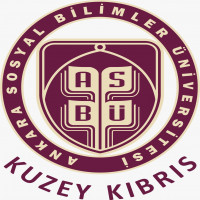


Prof. Dr.


